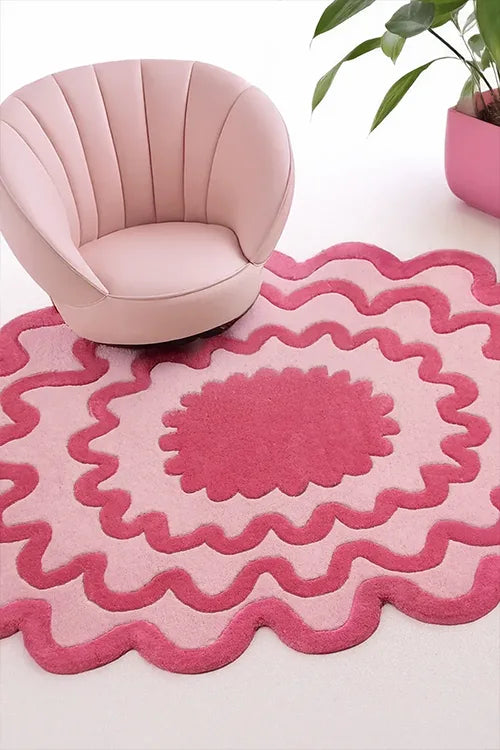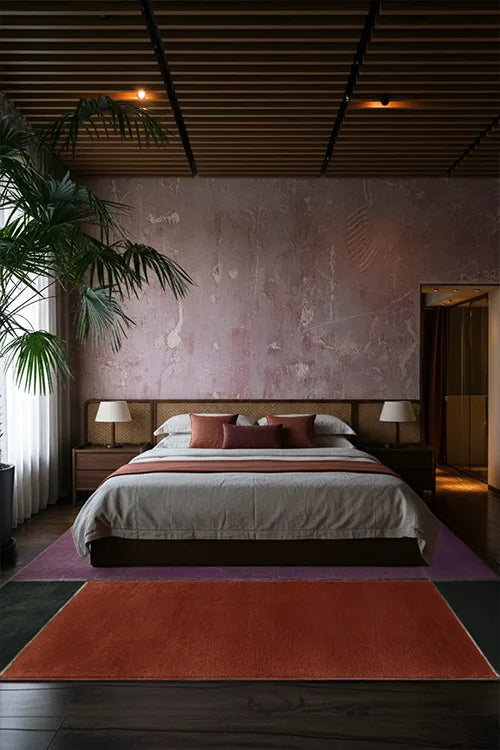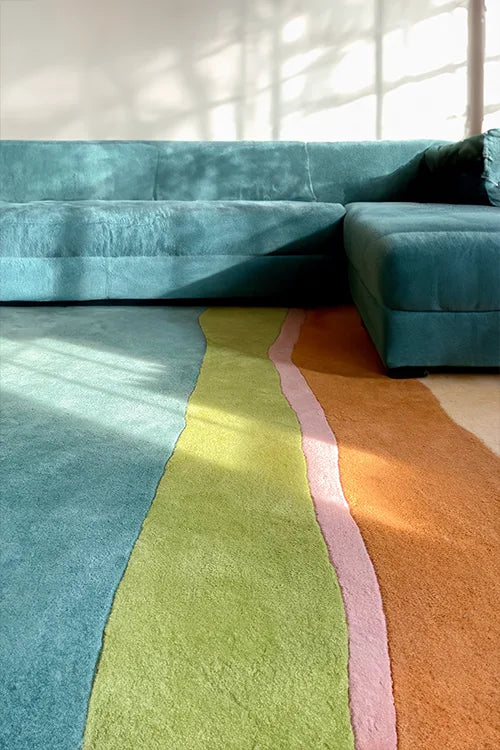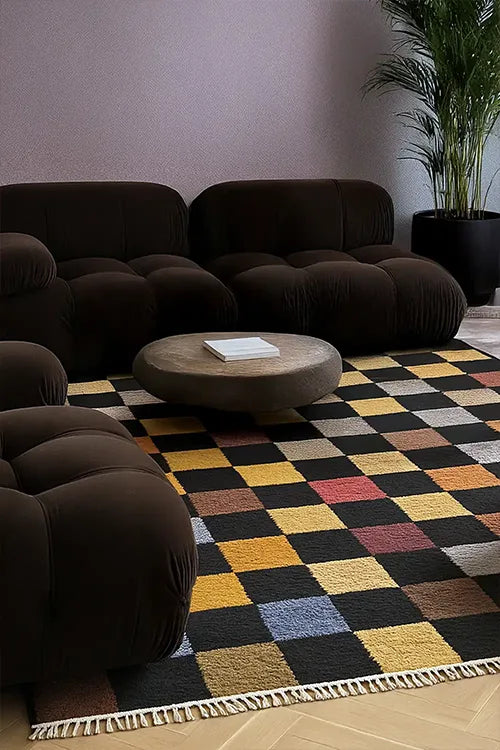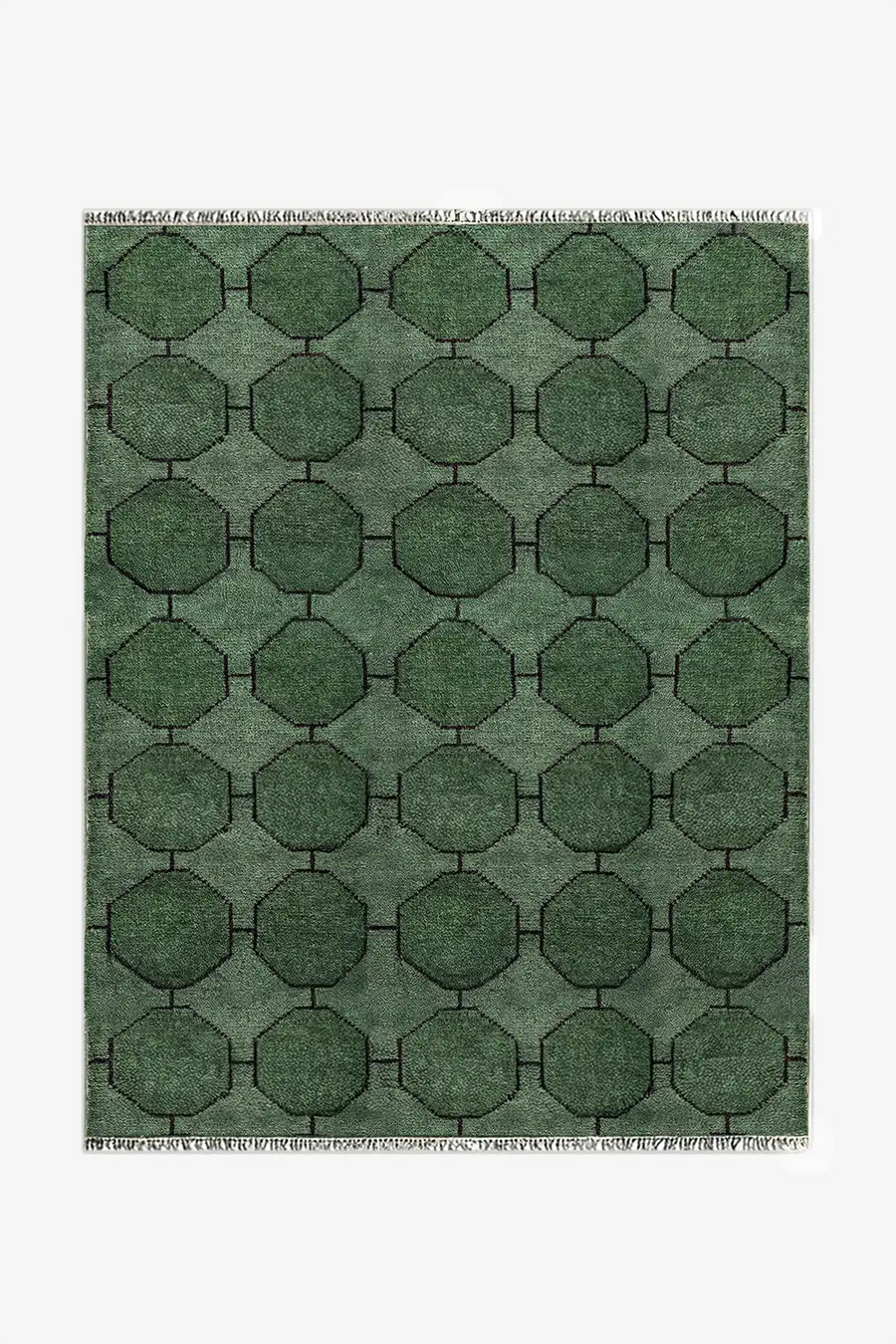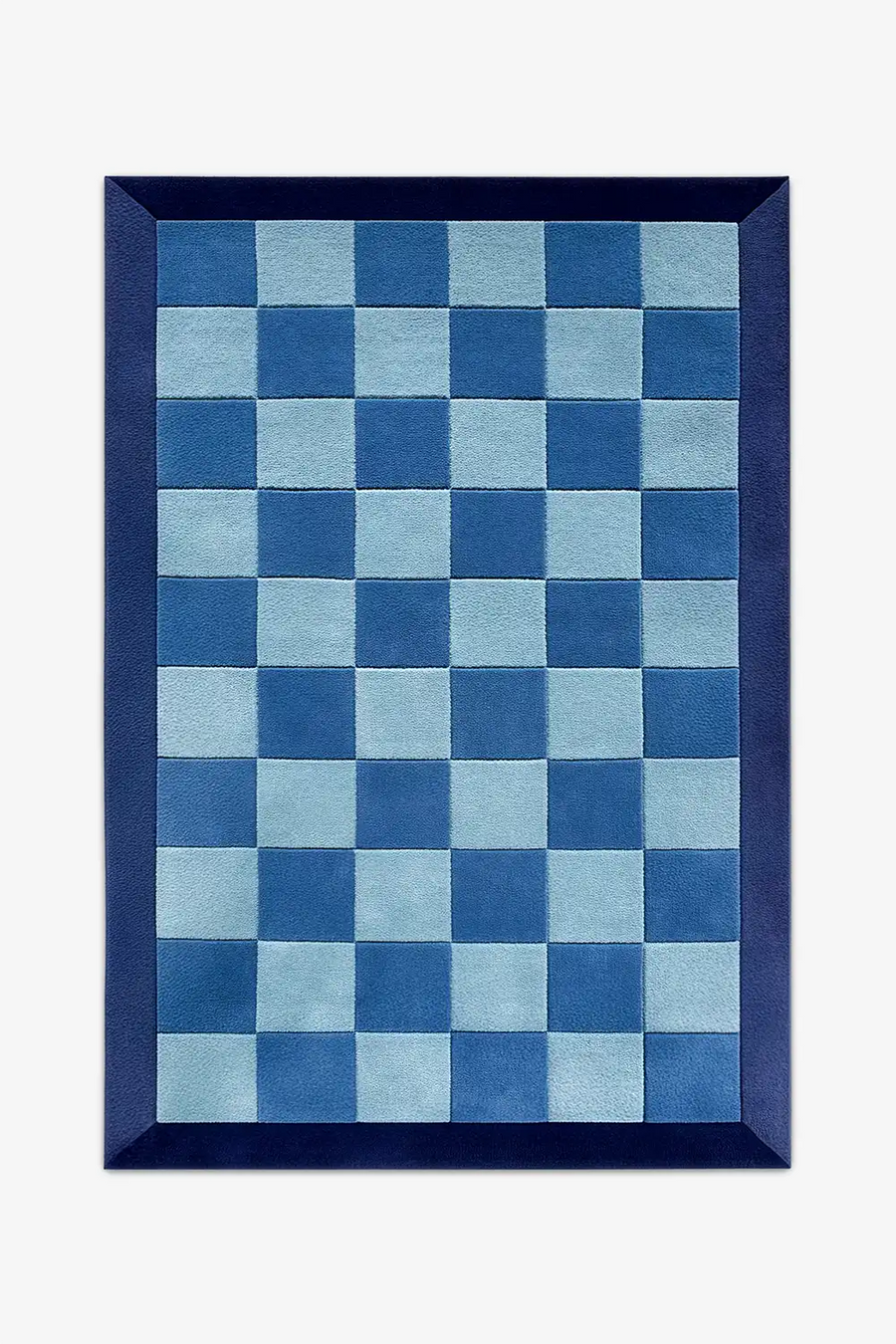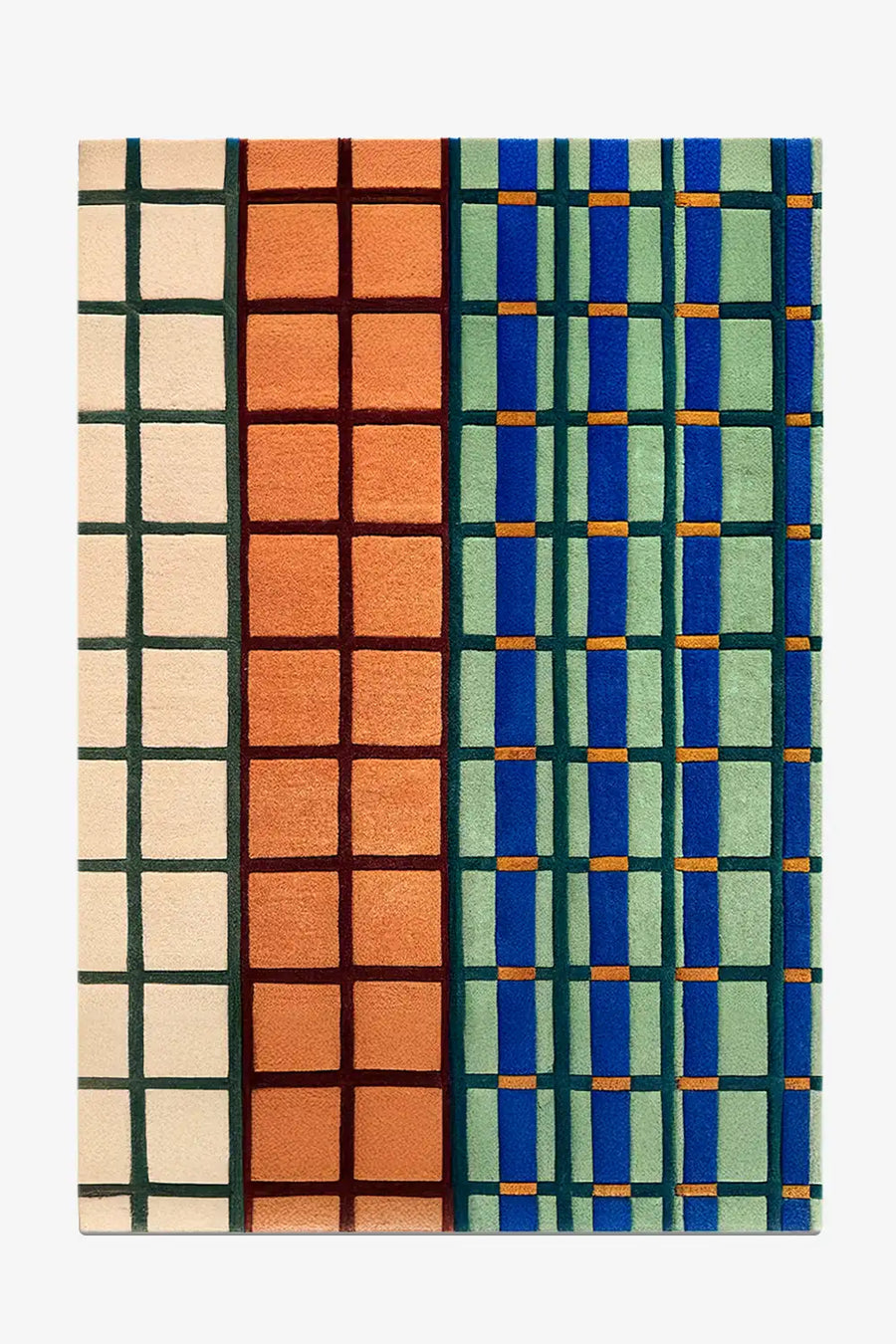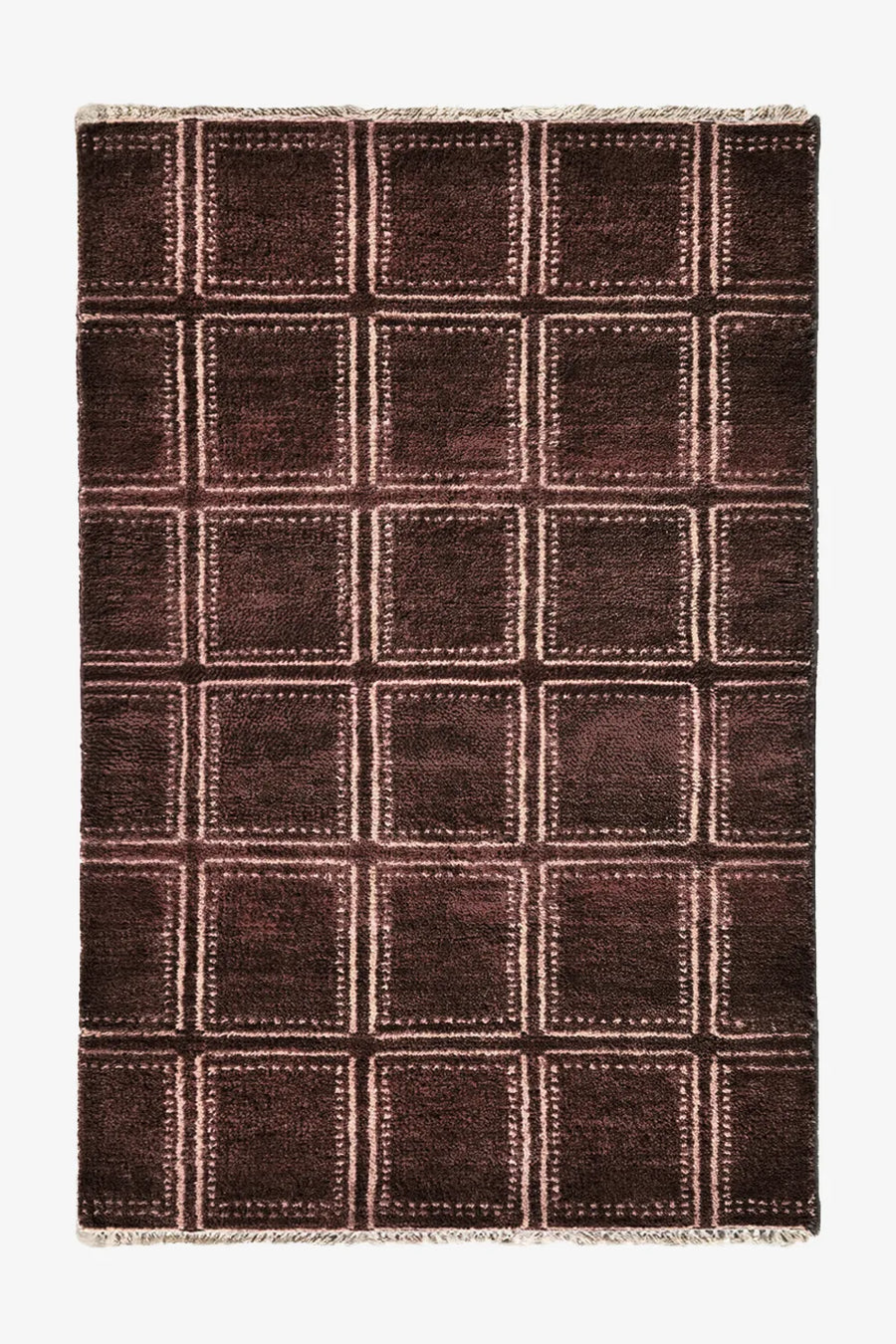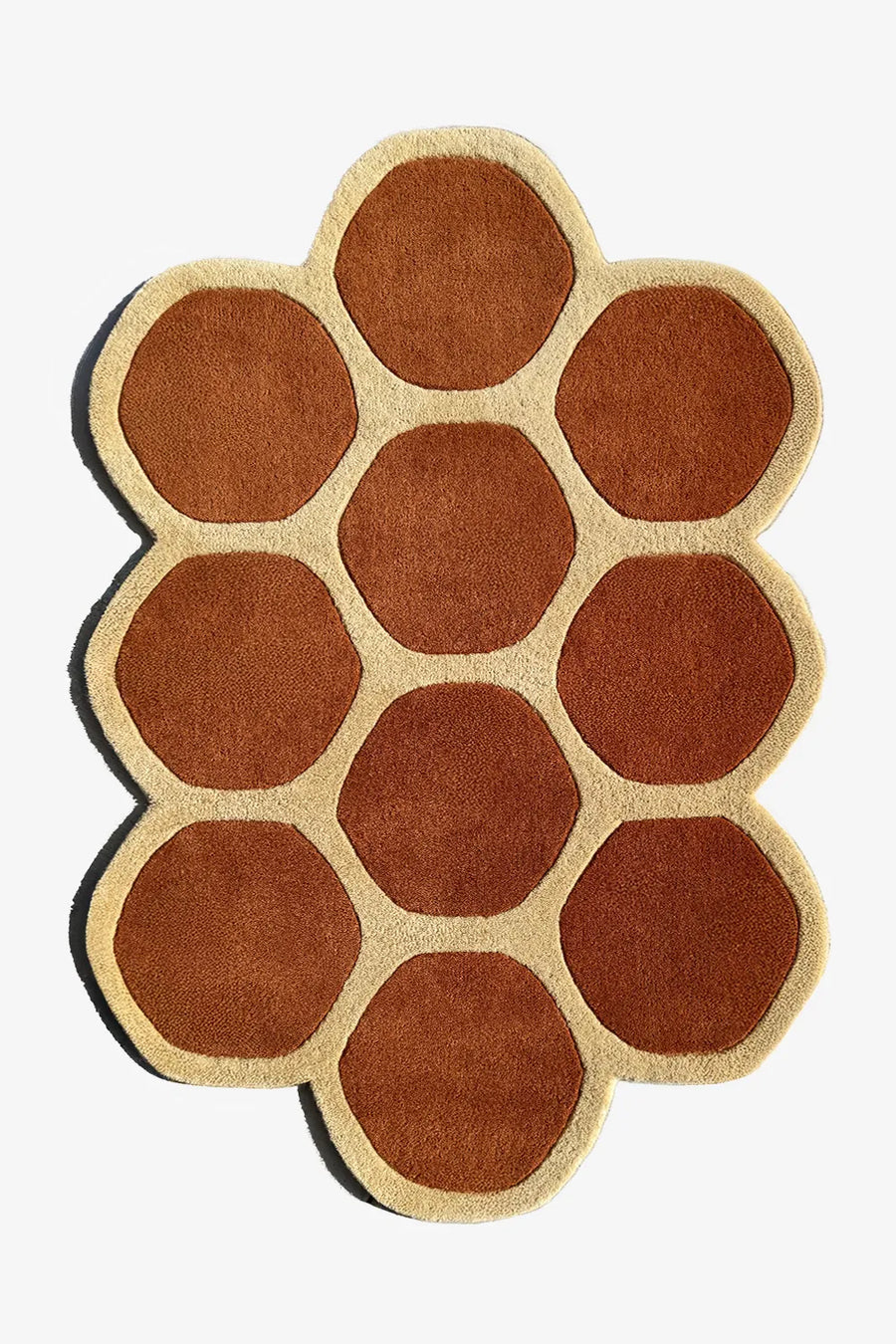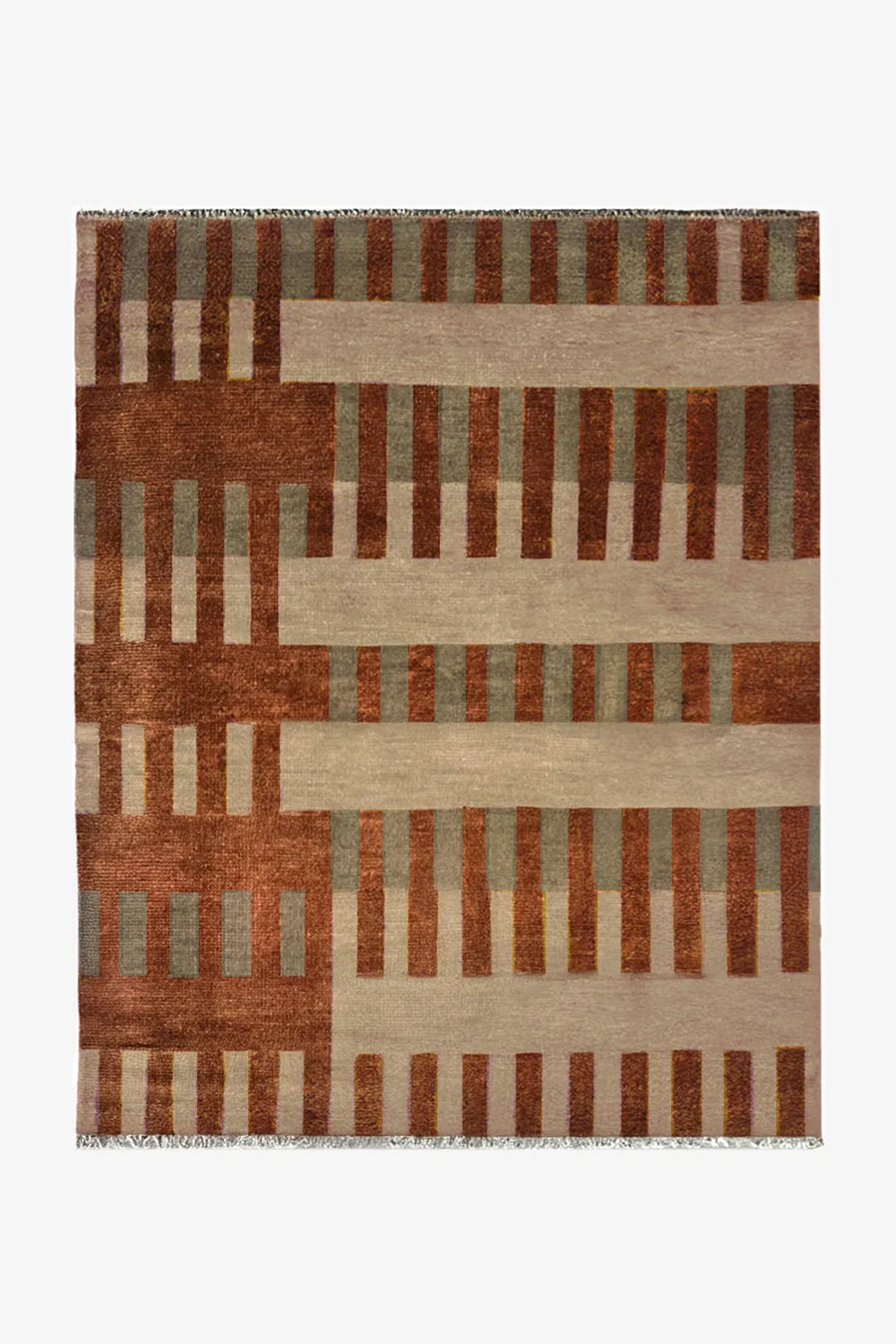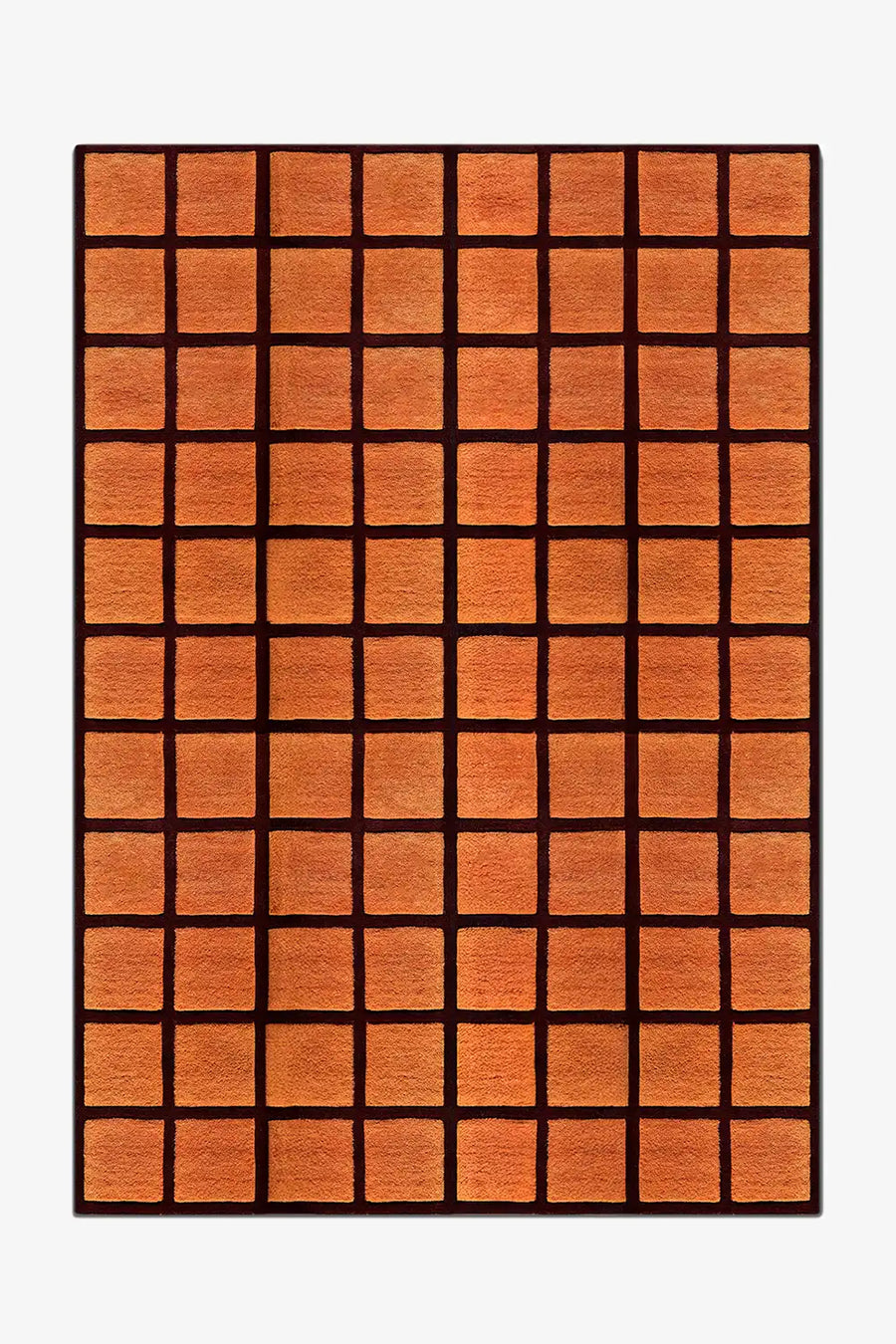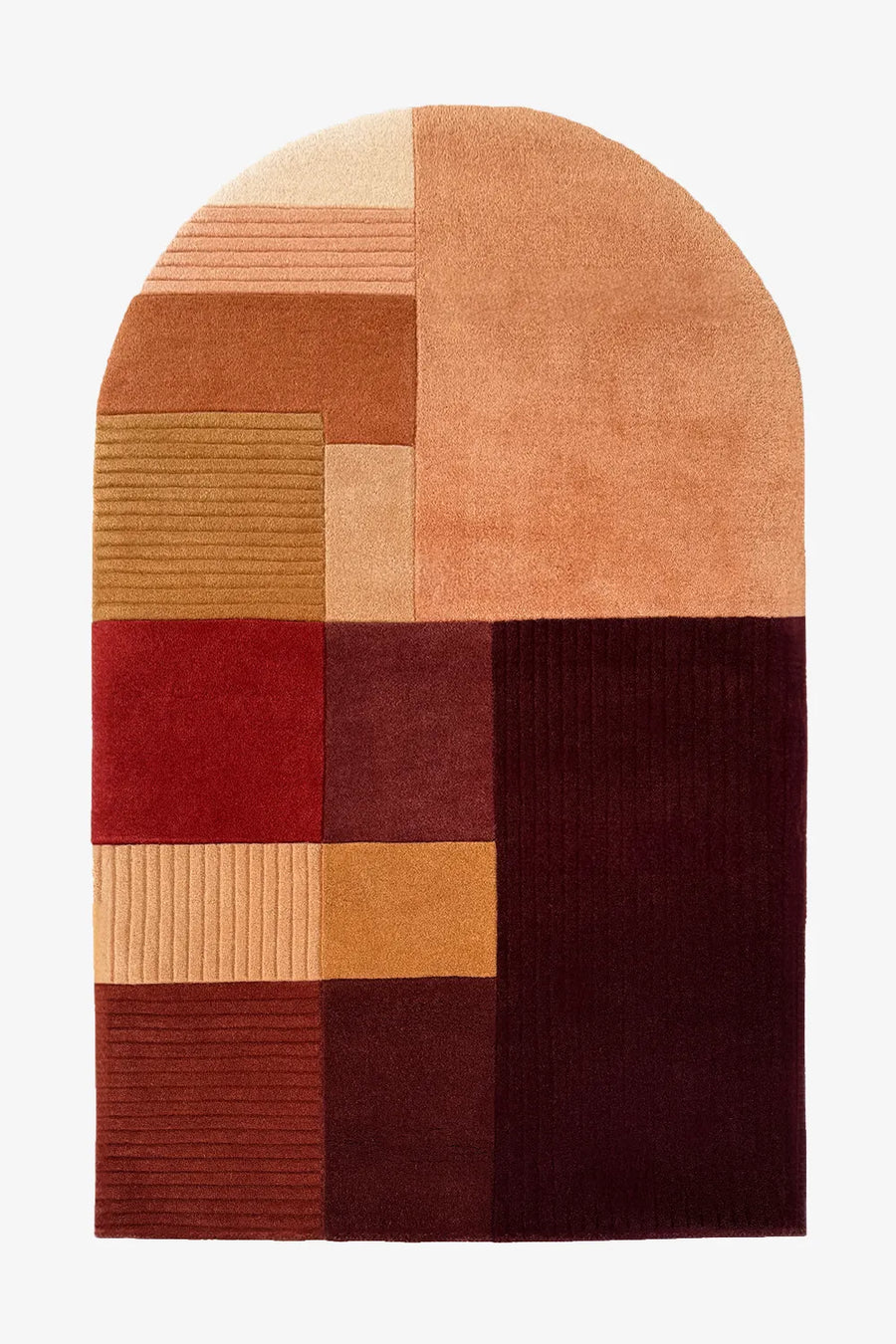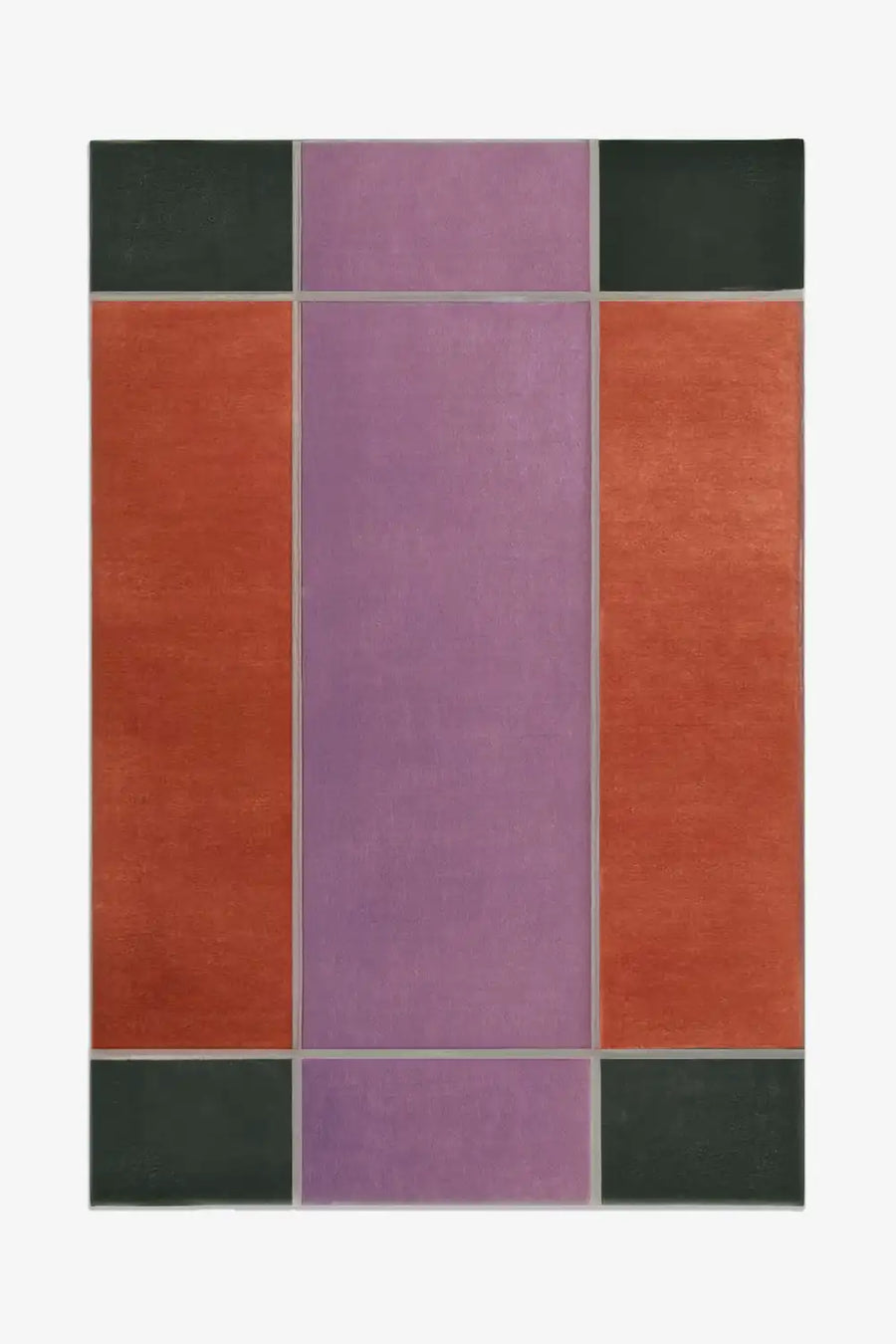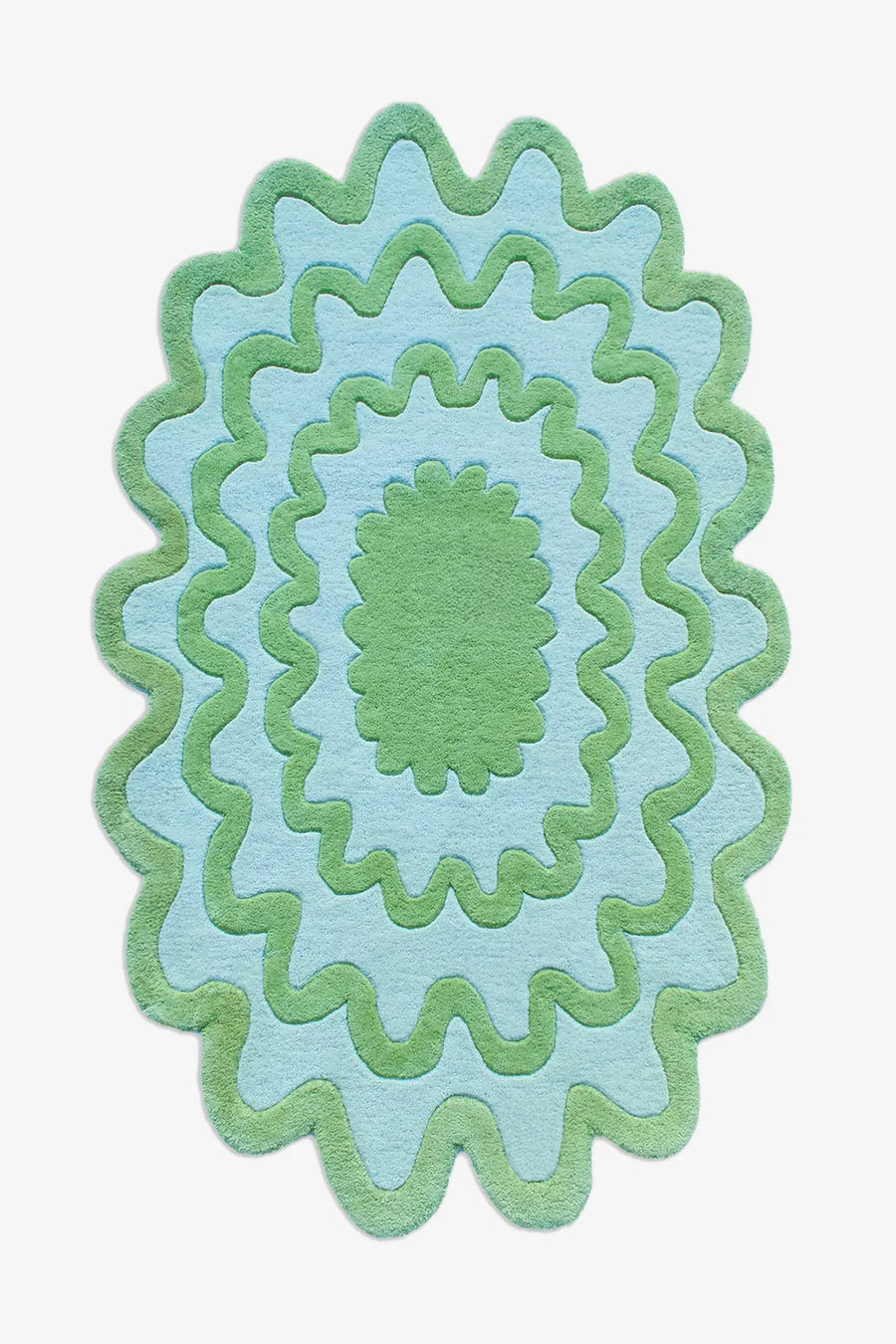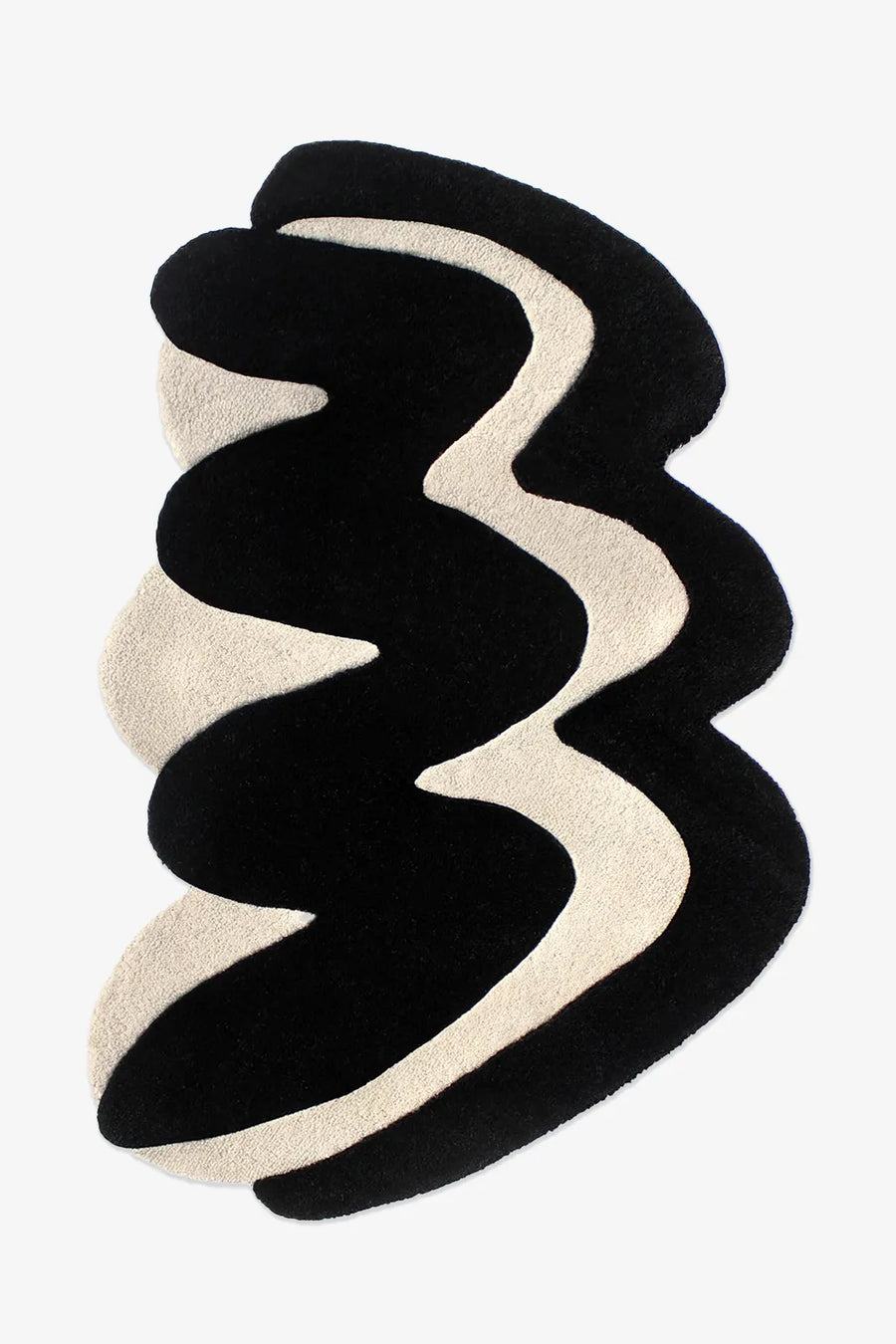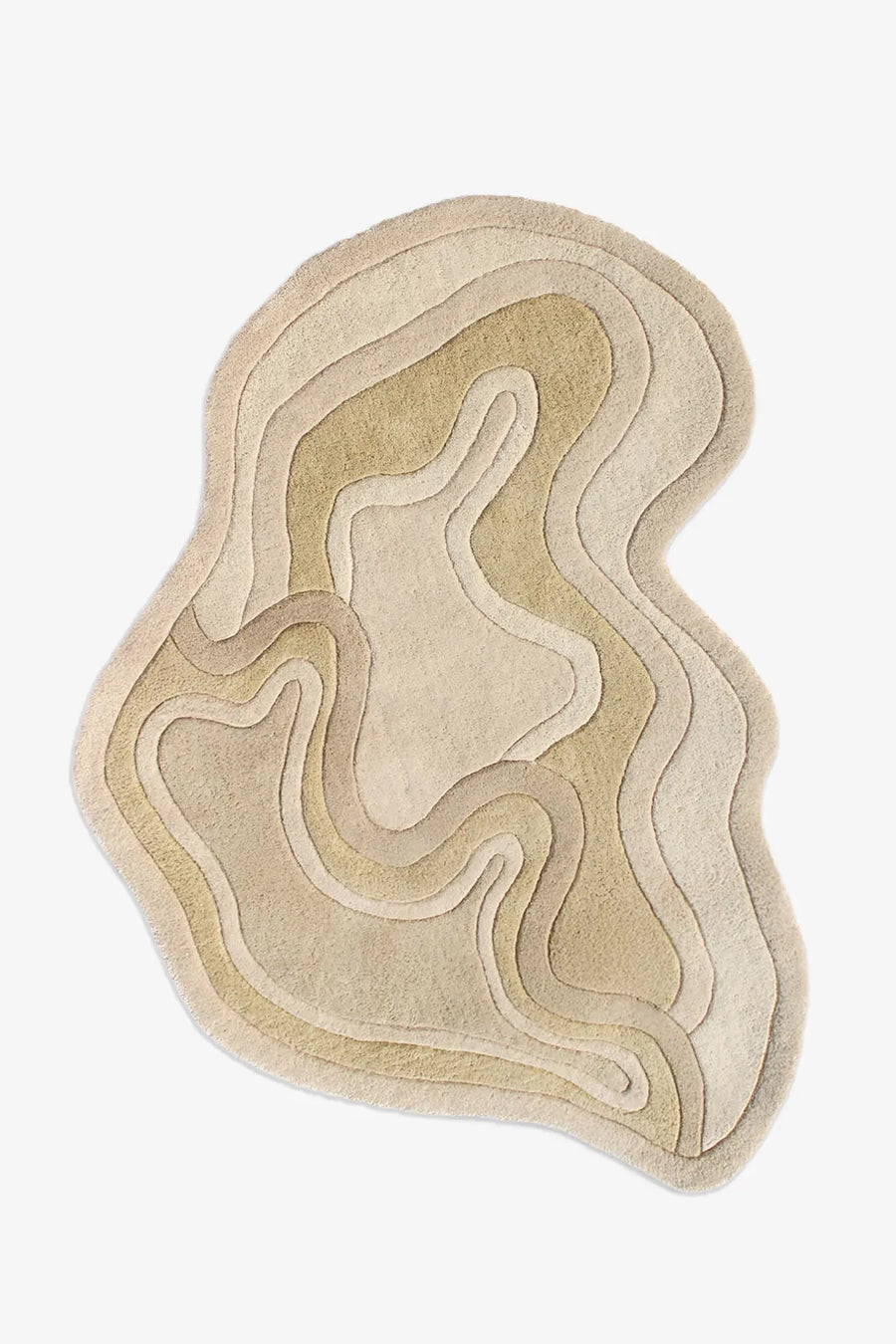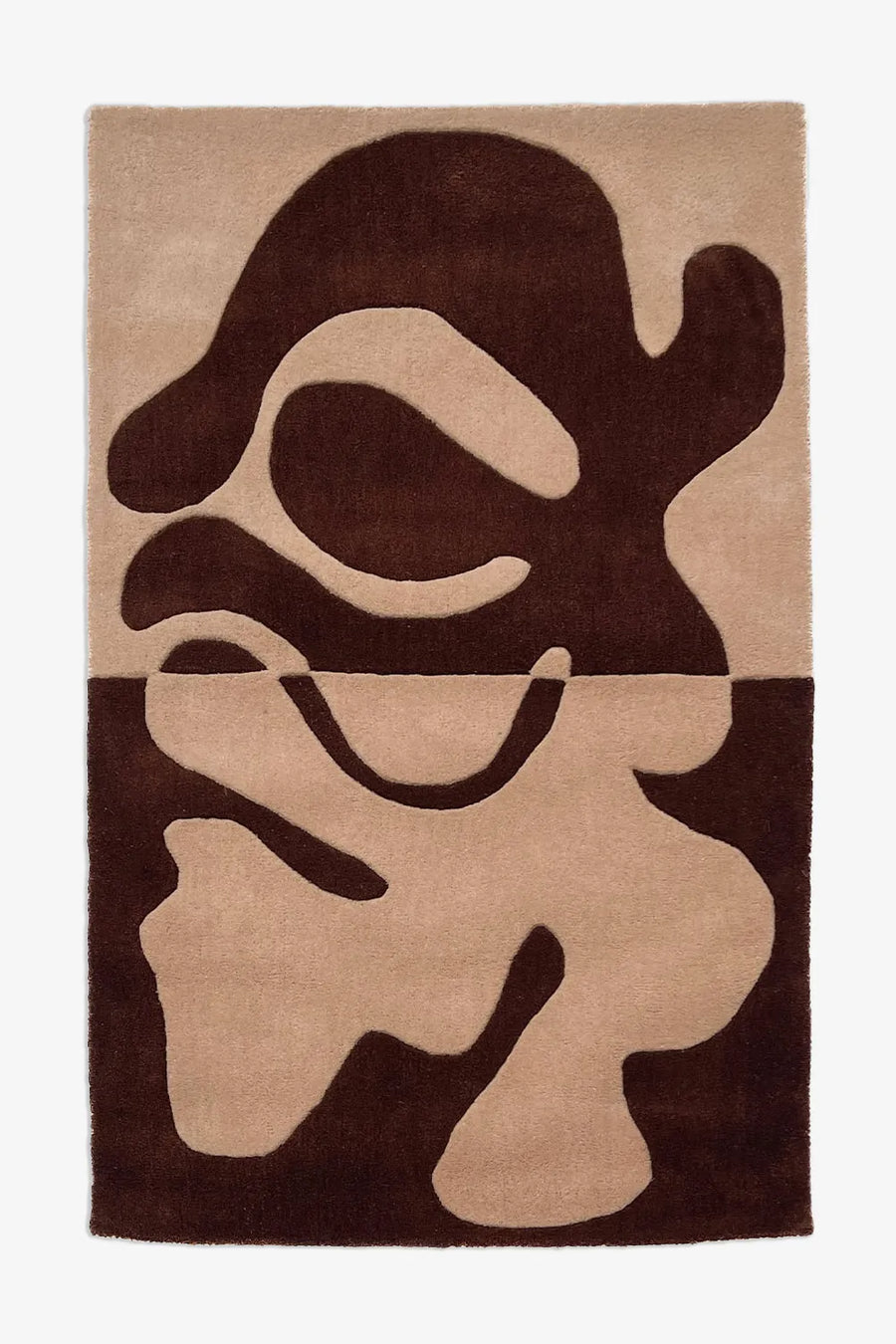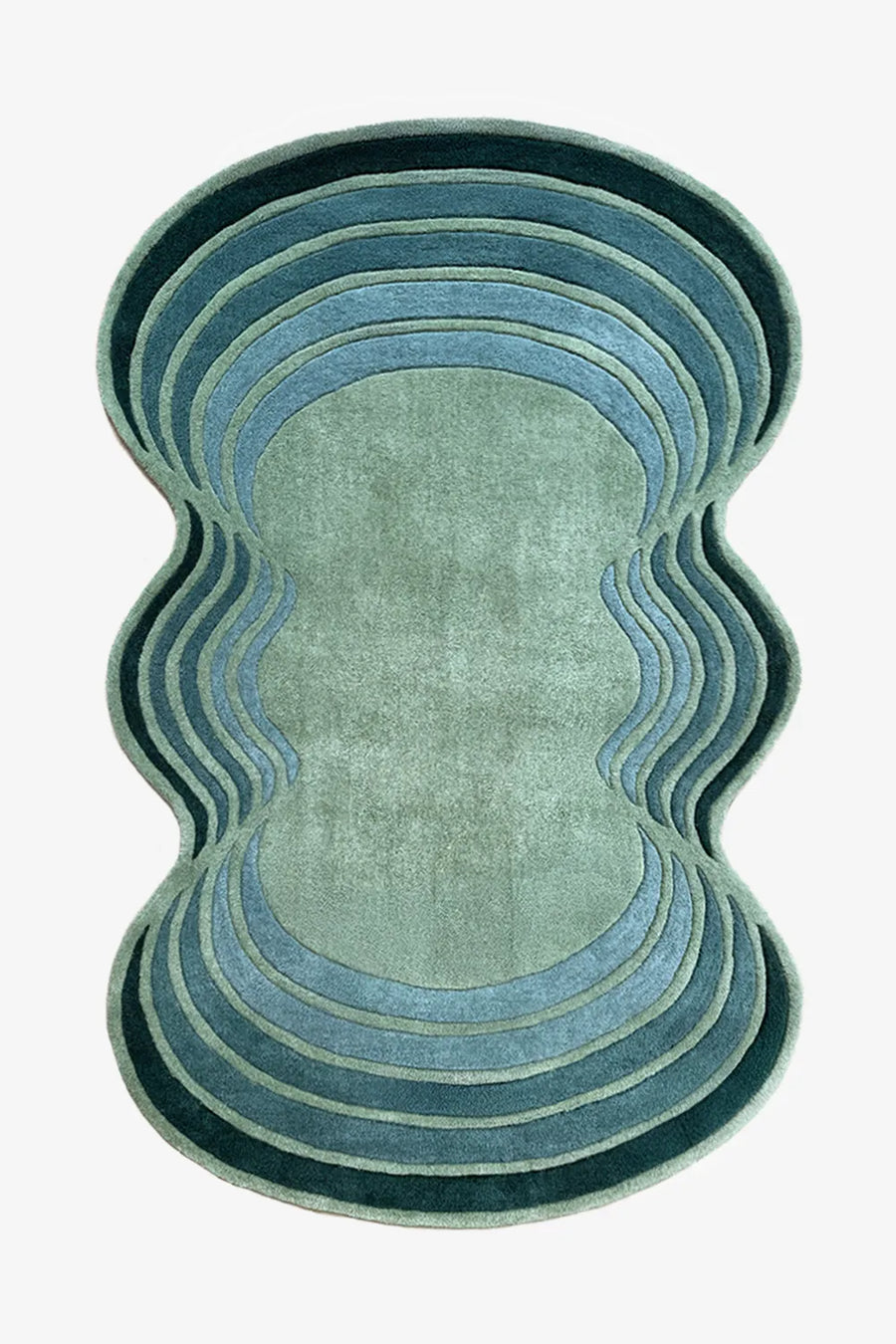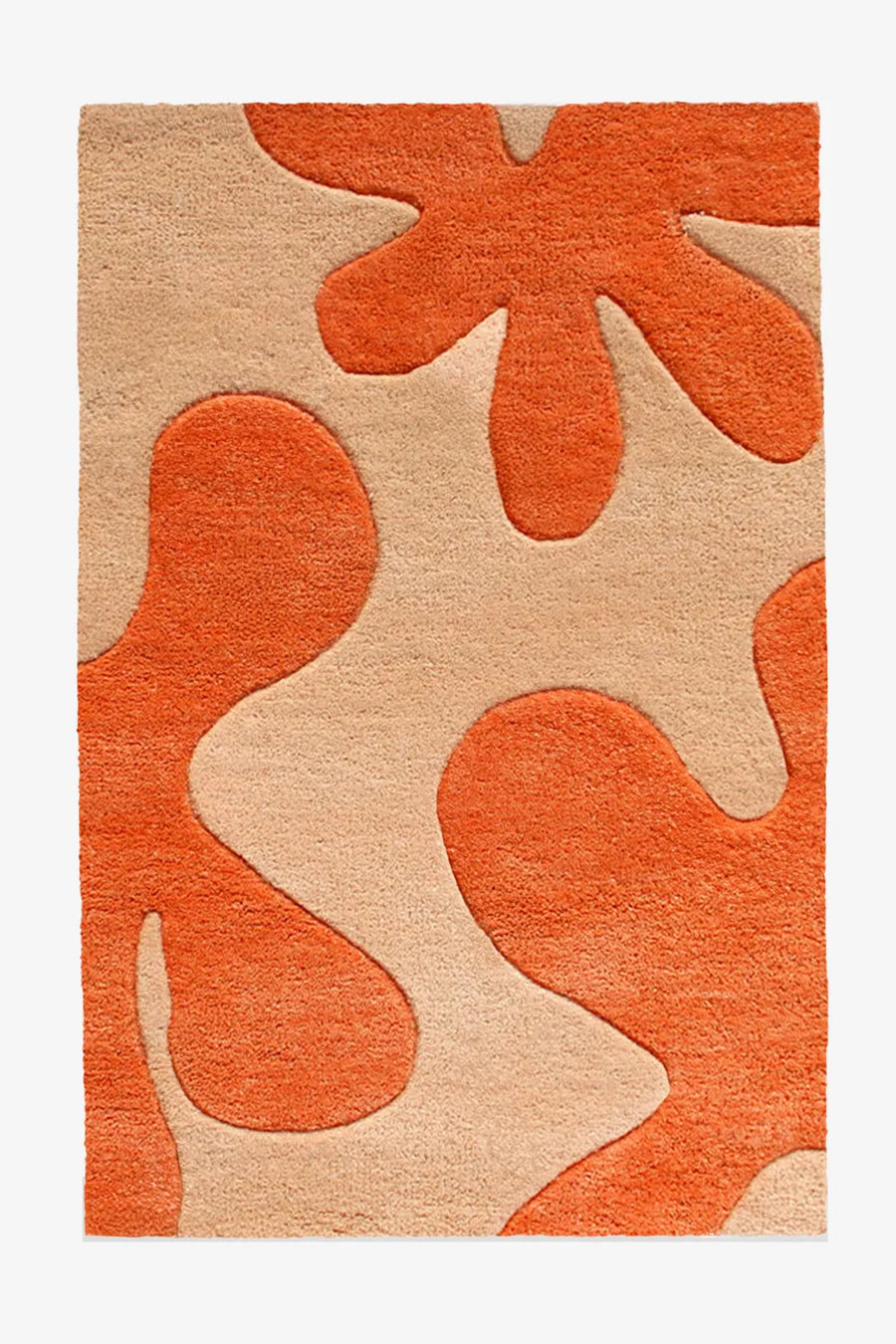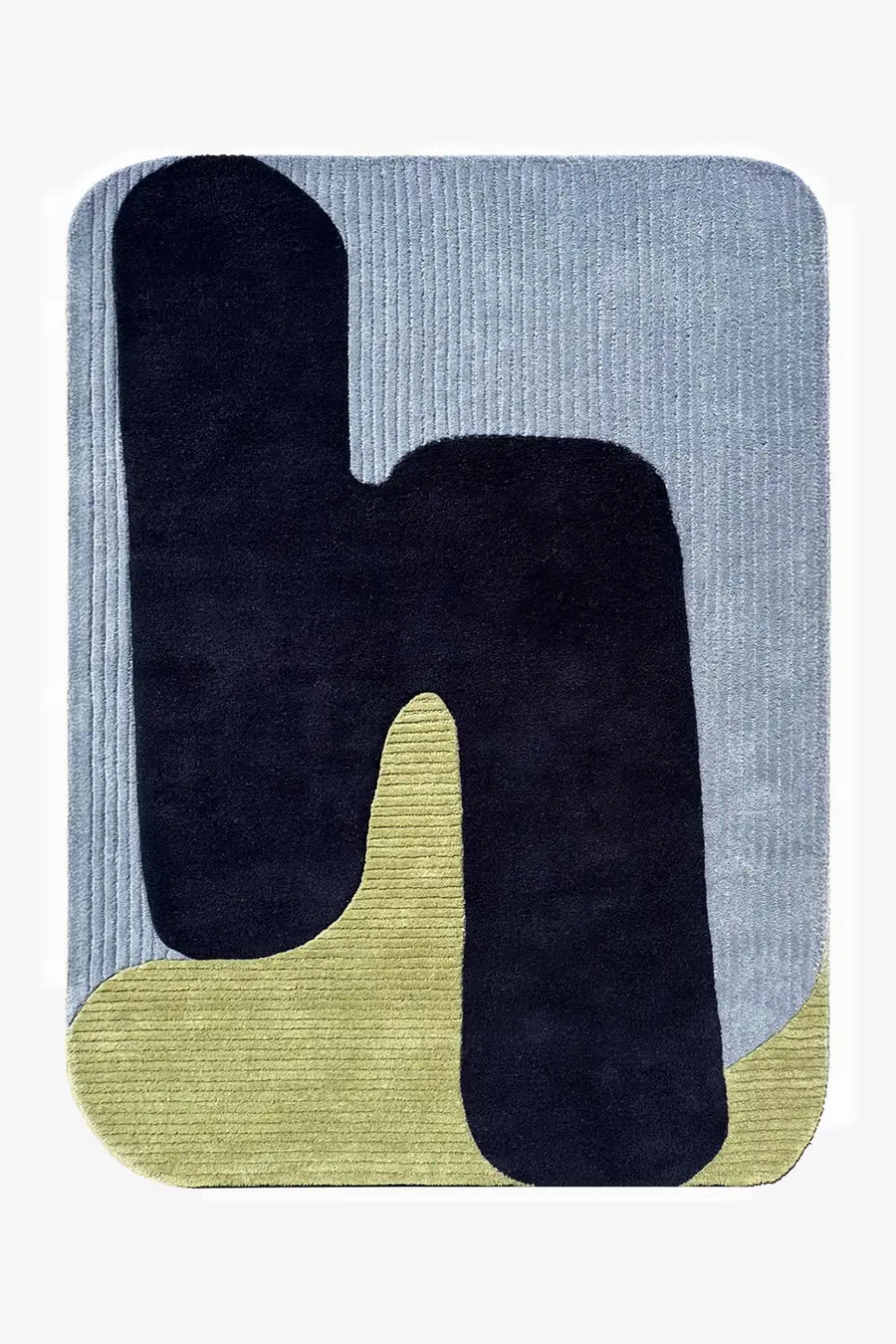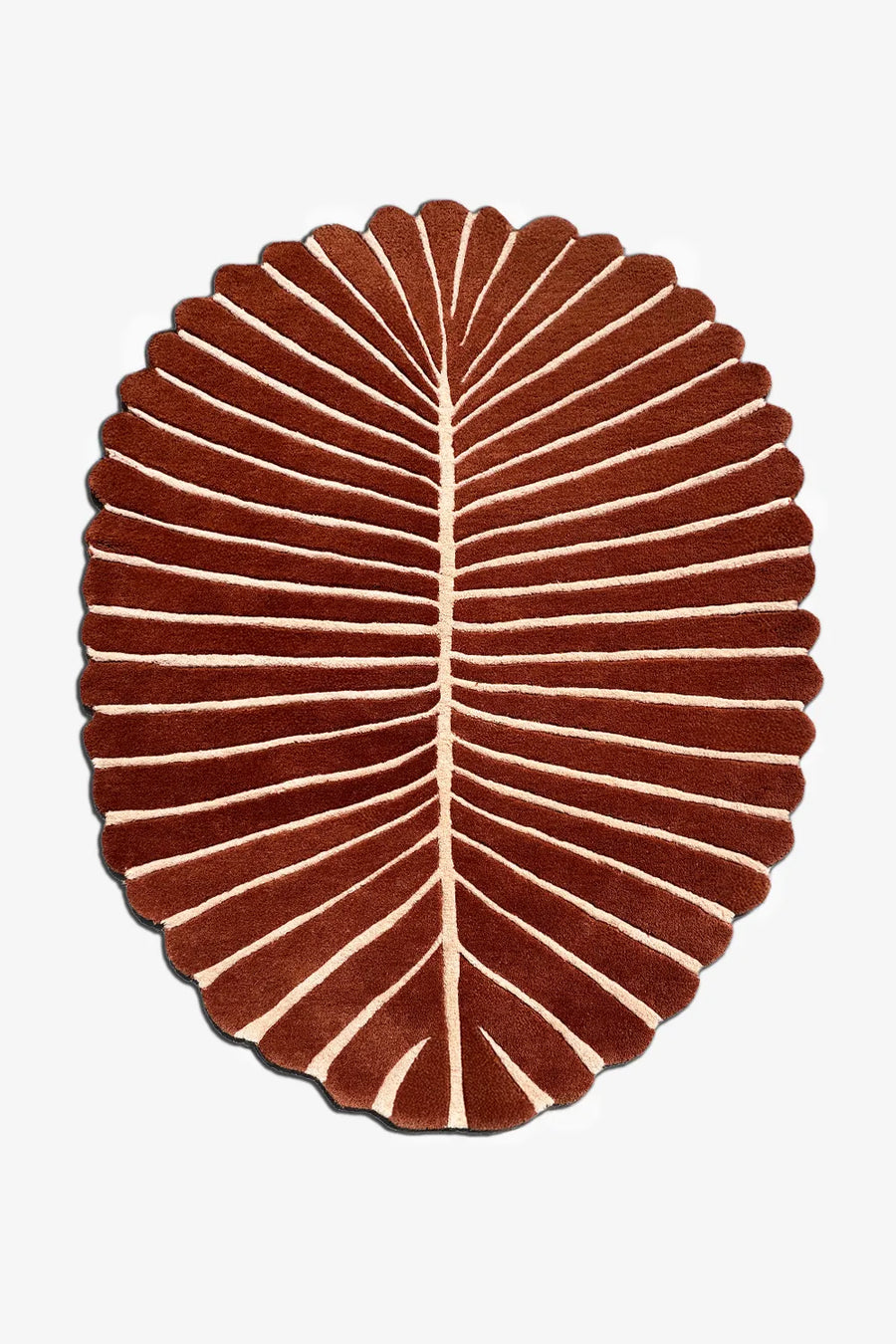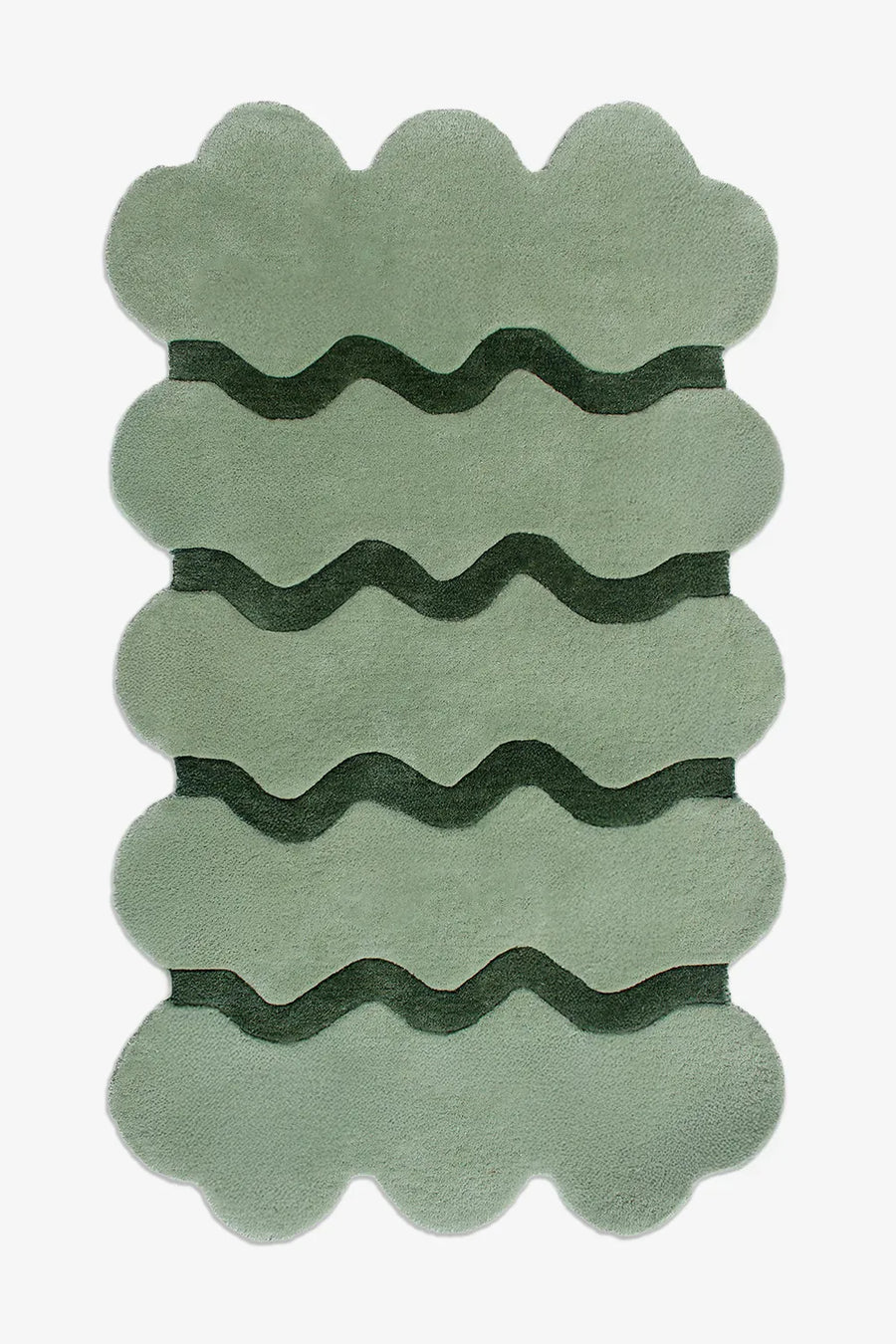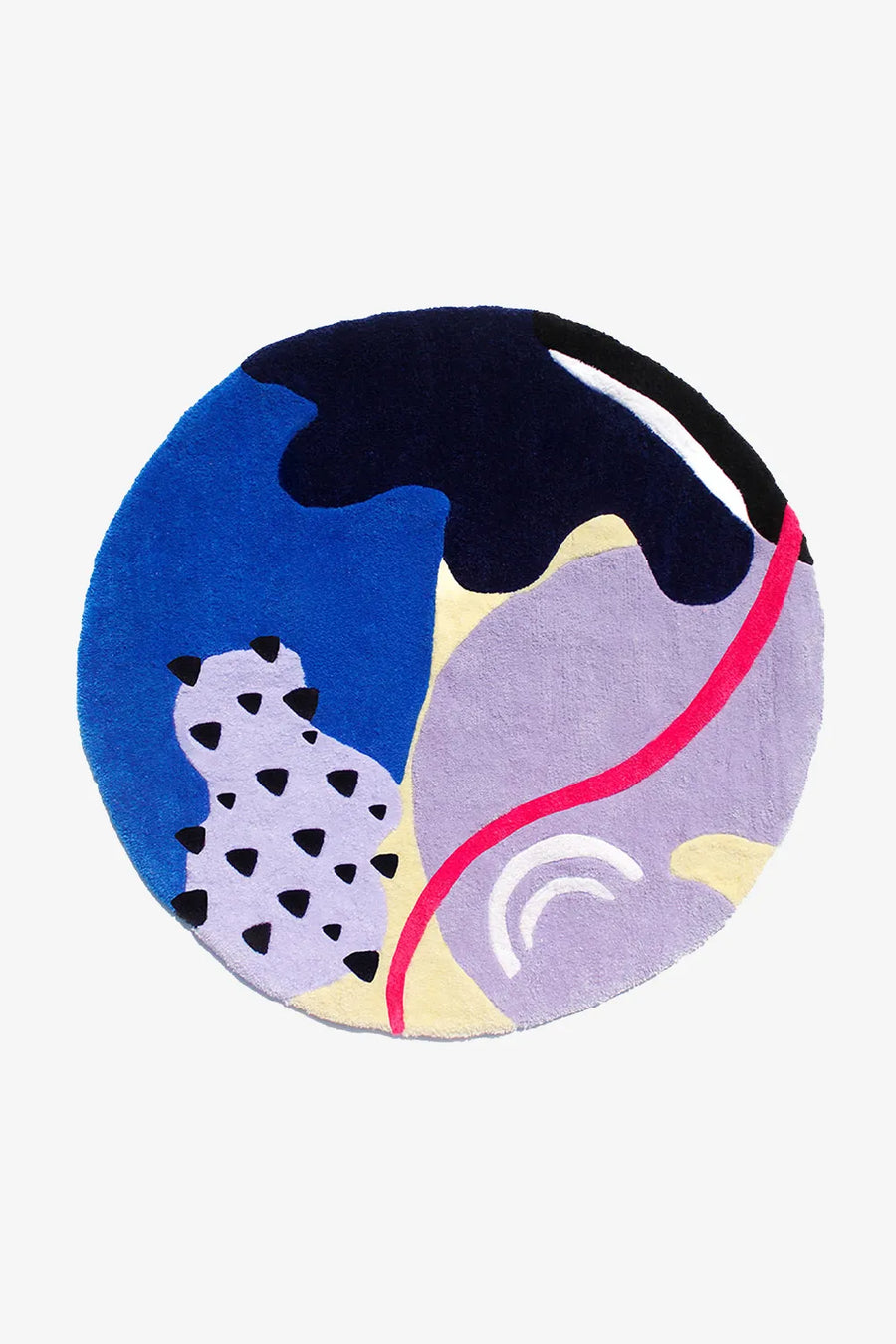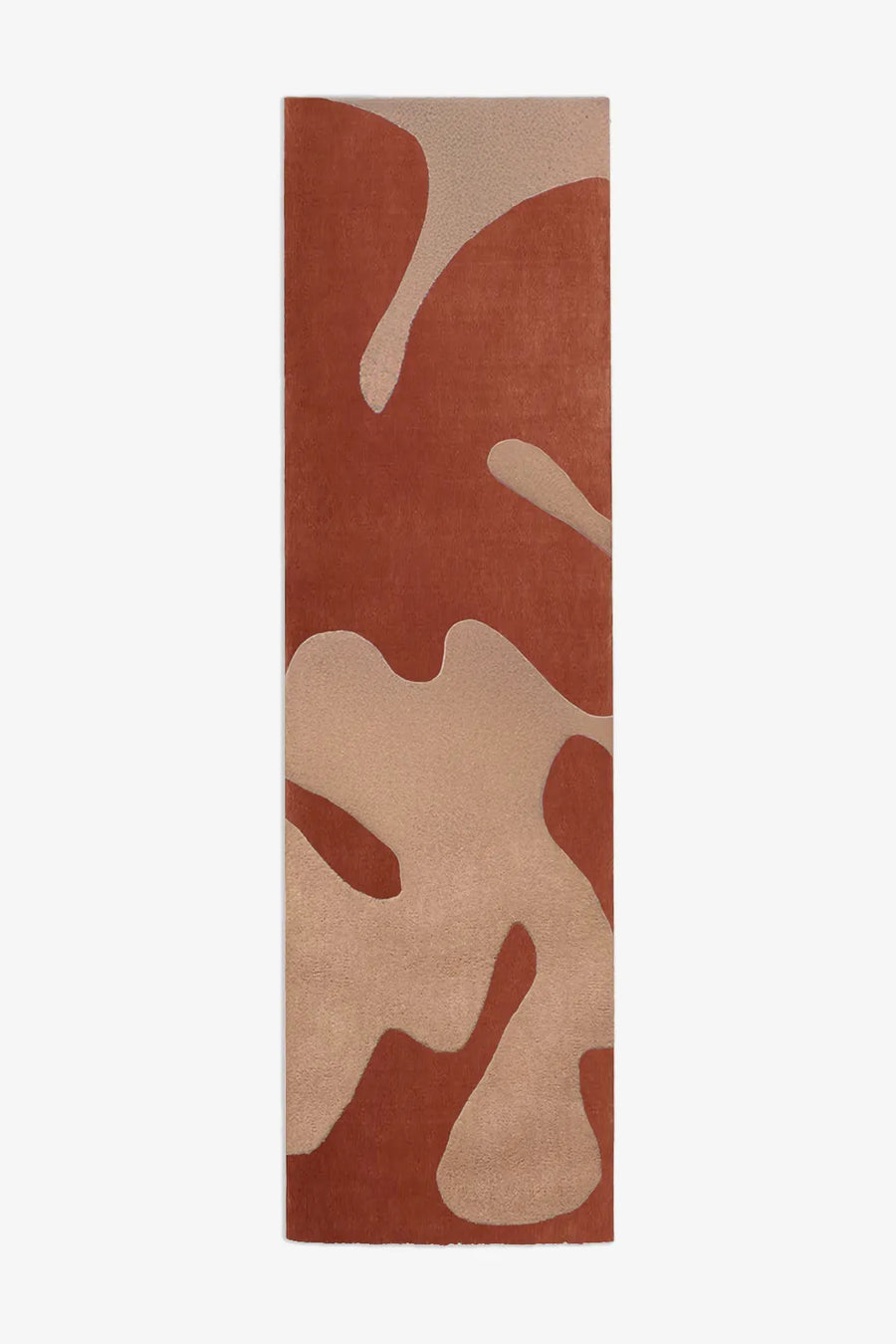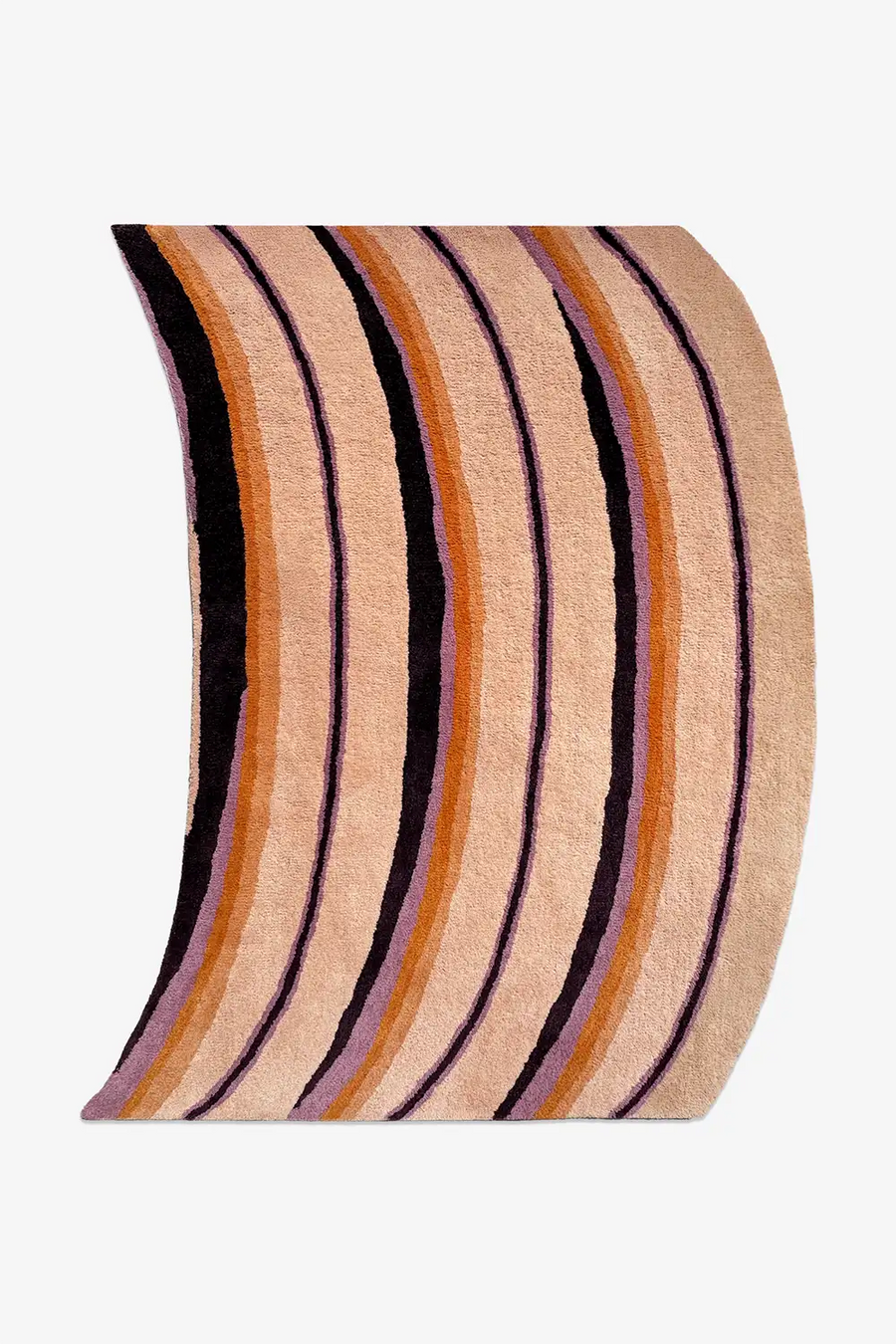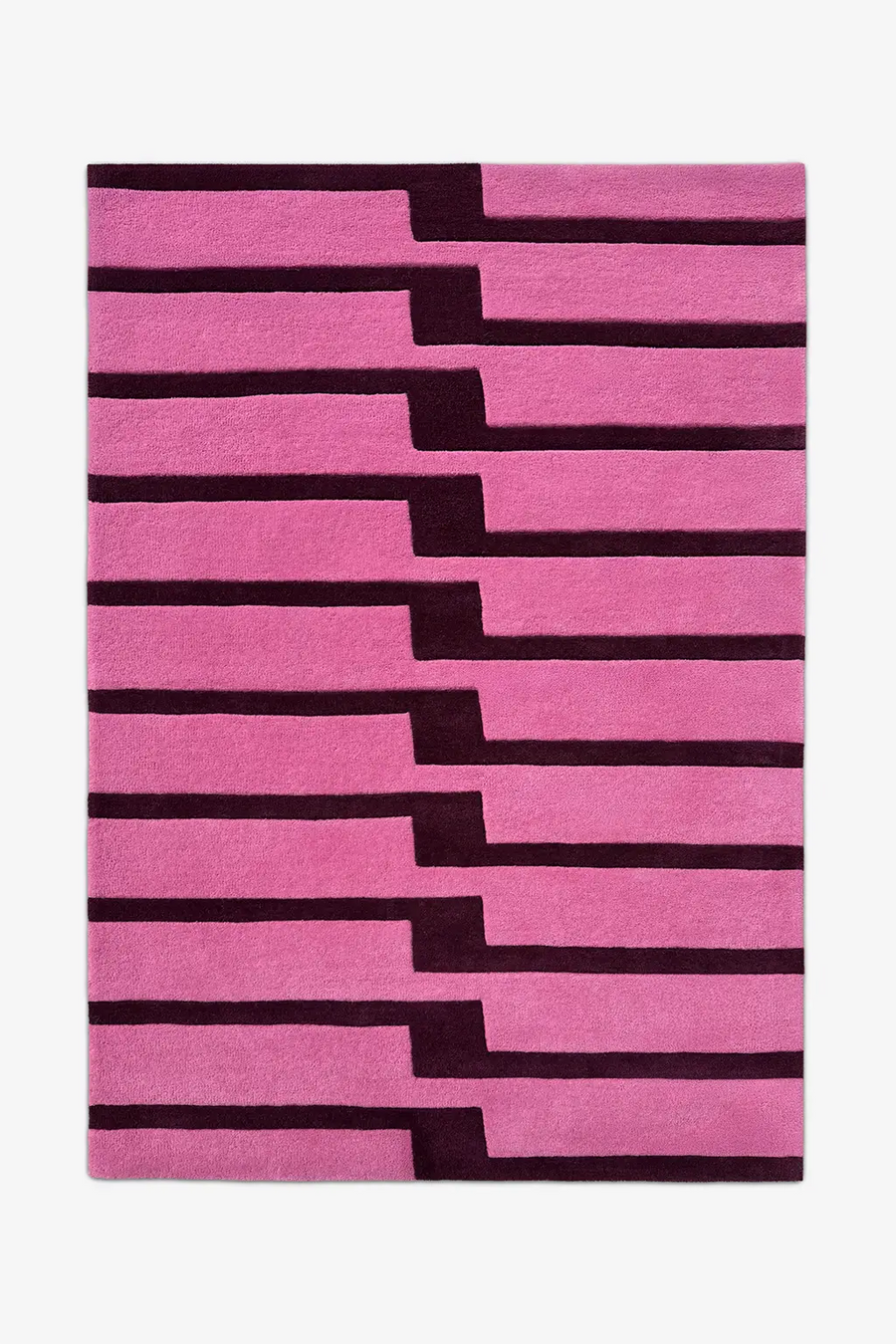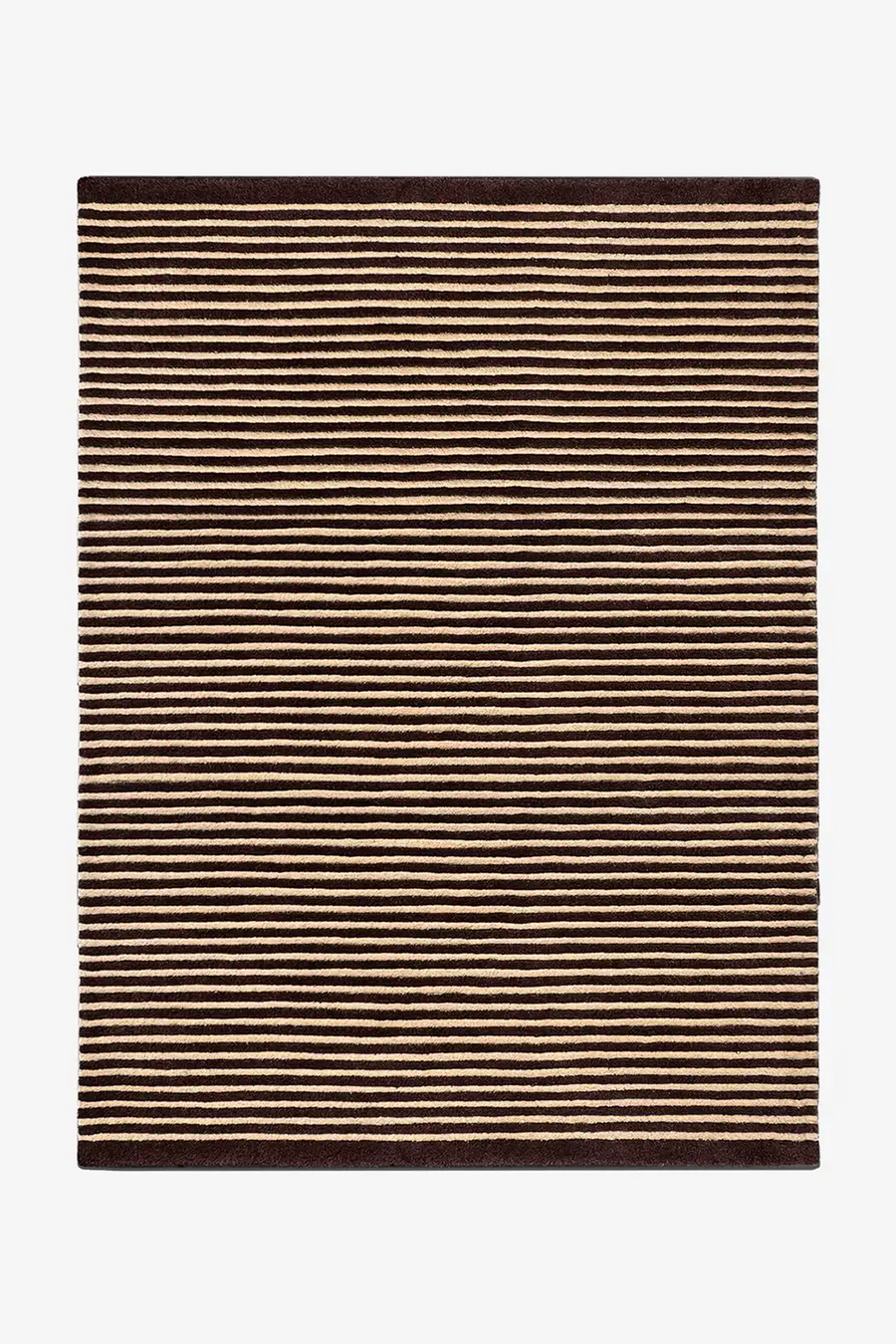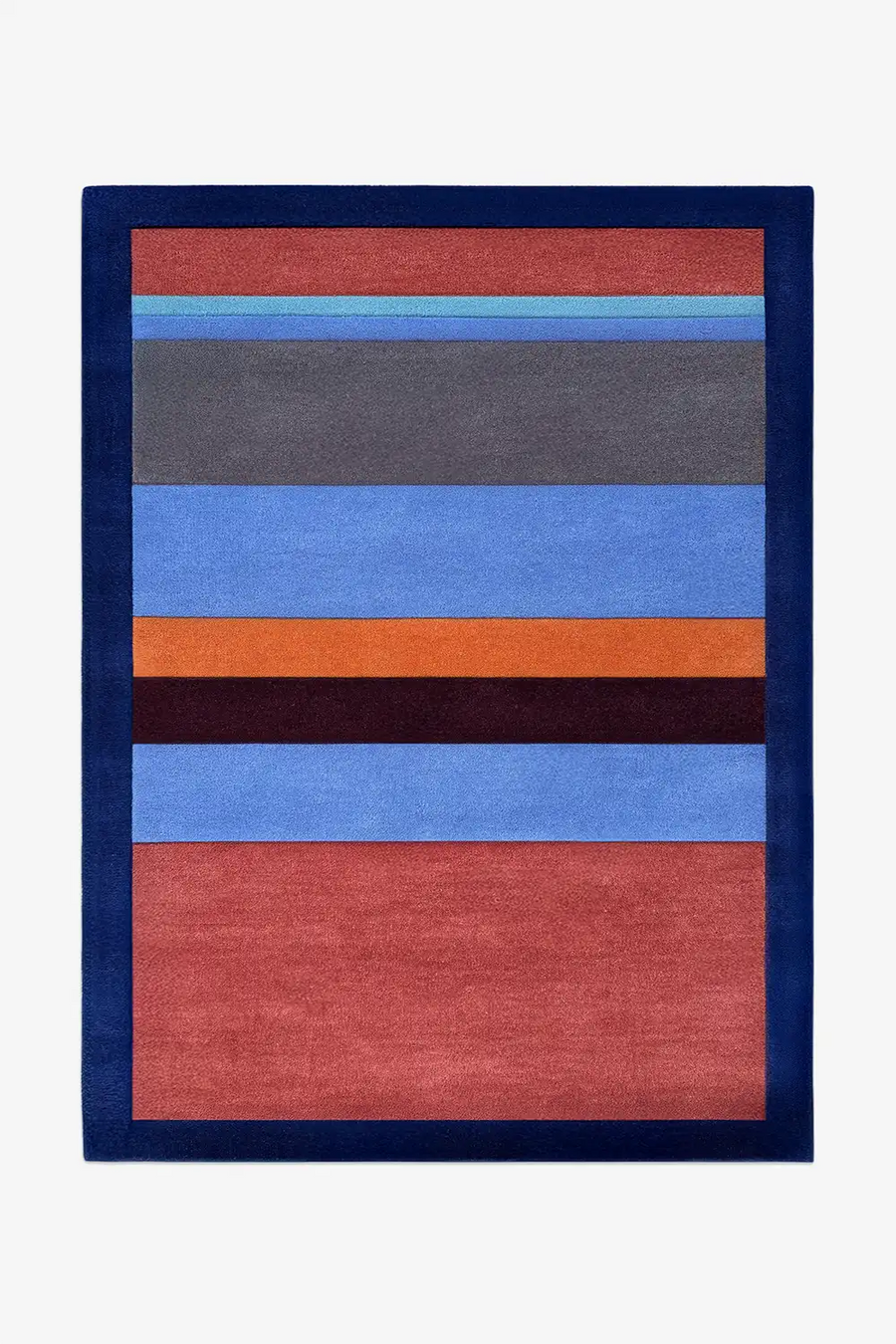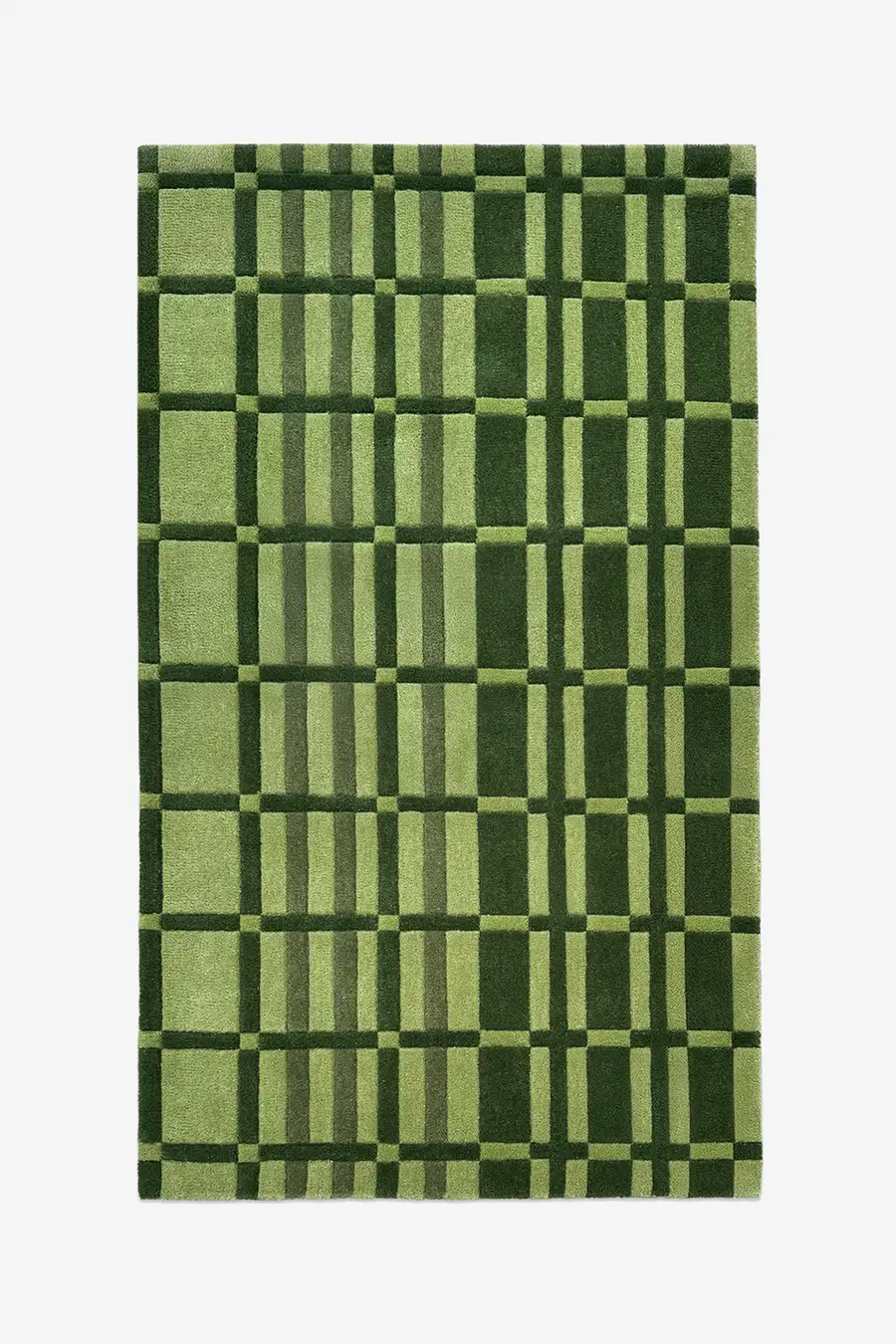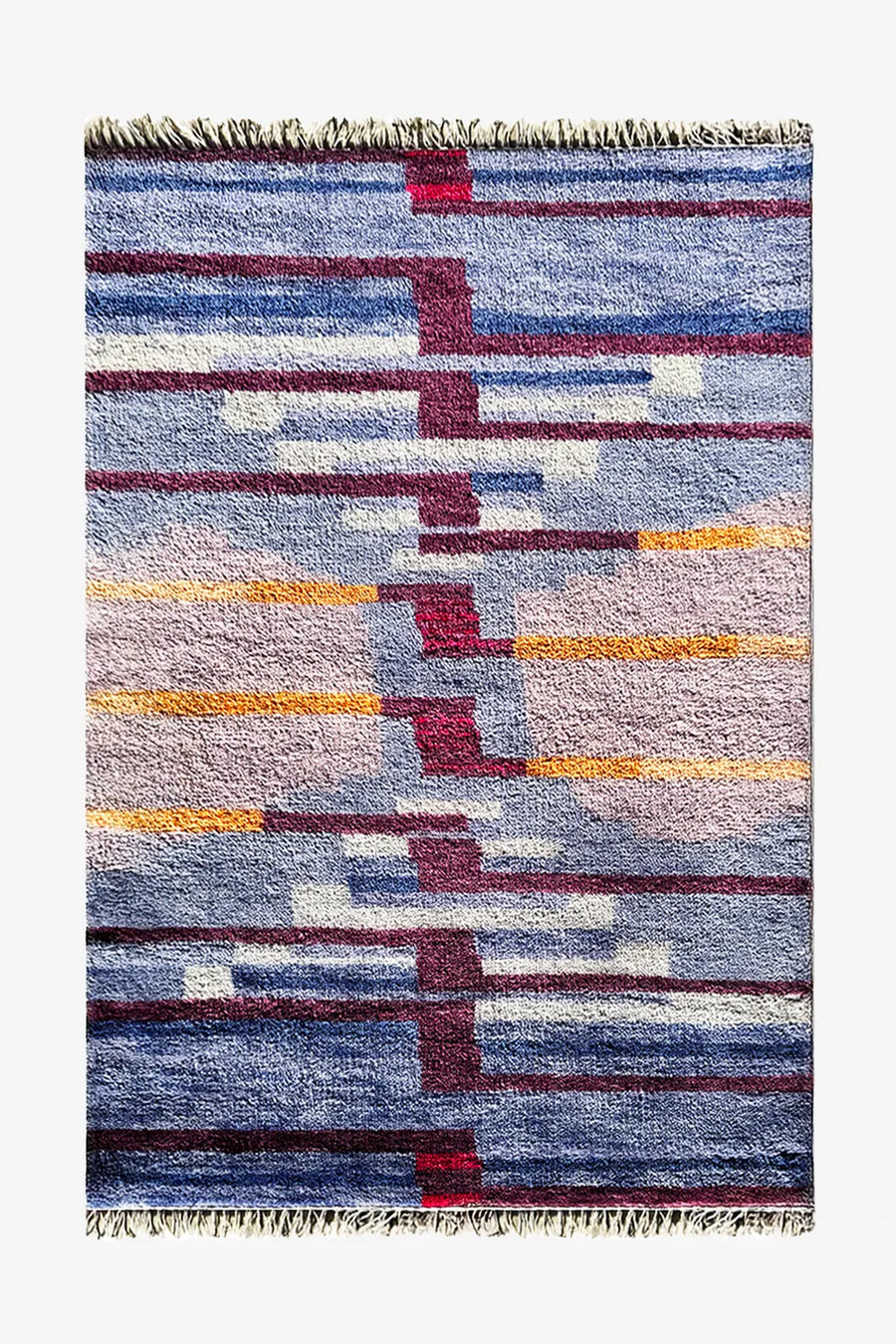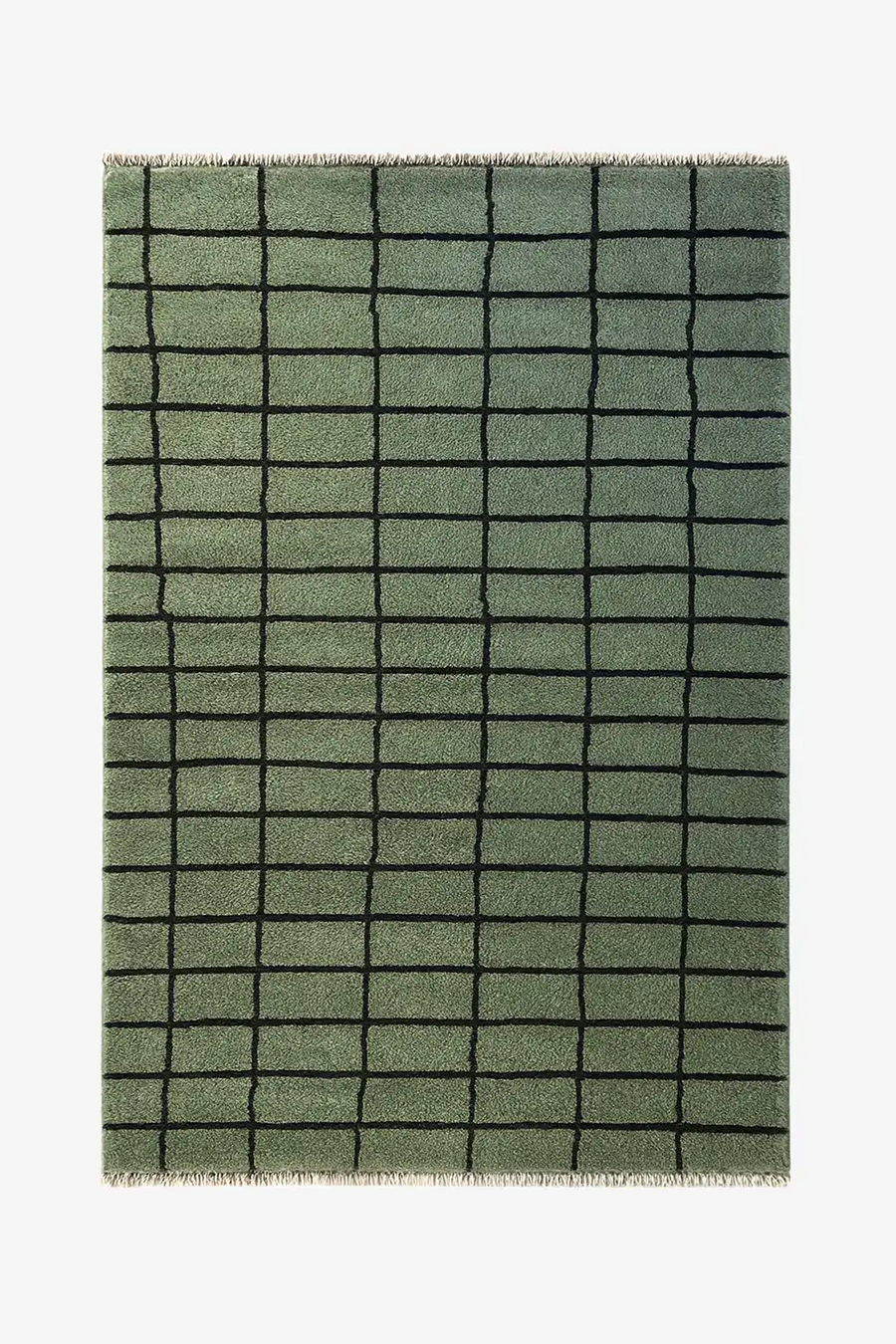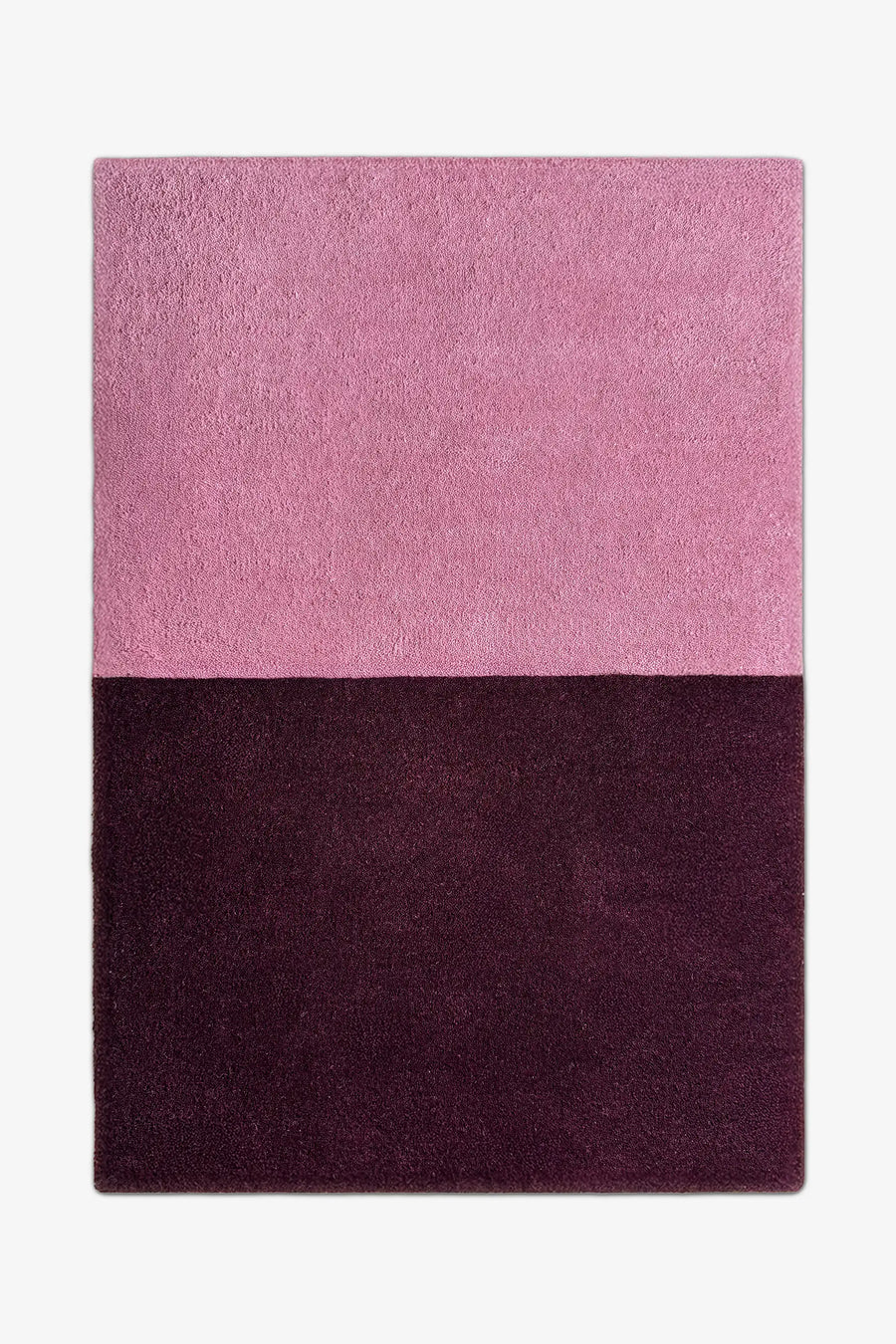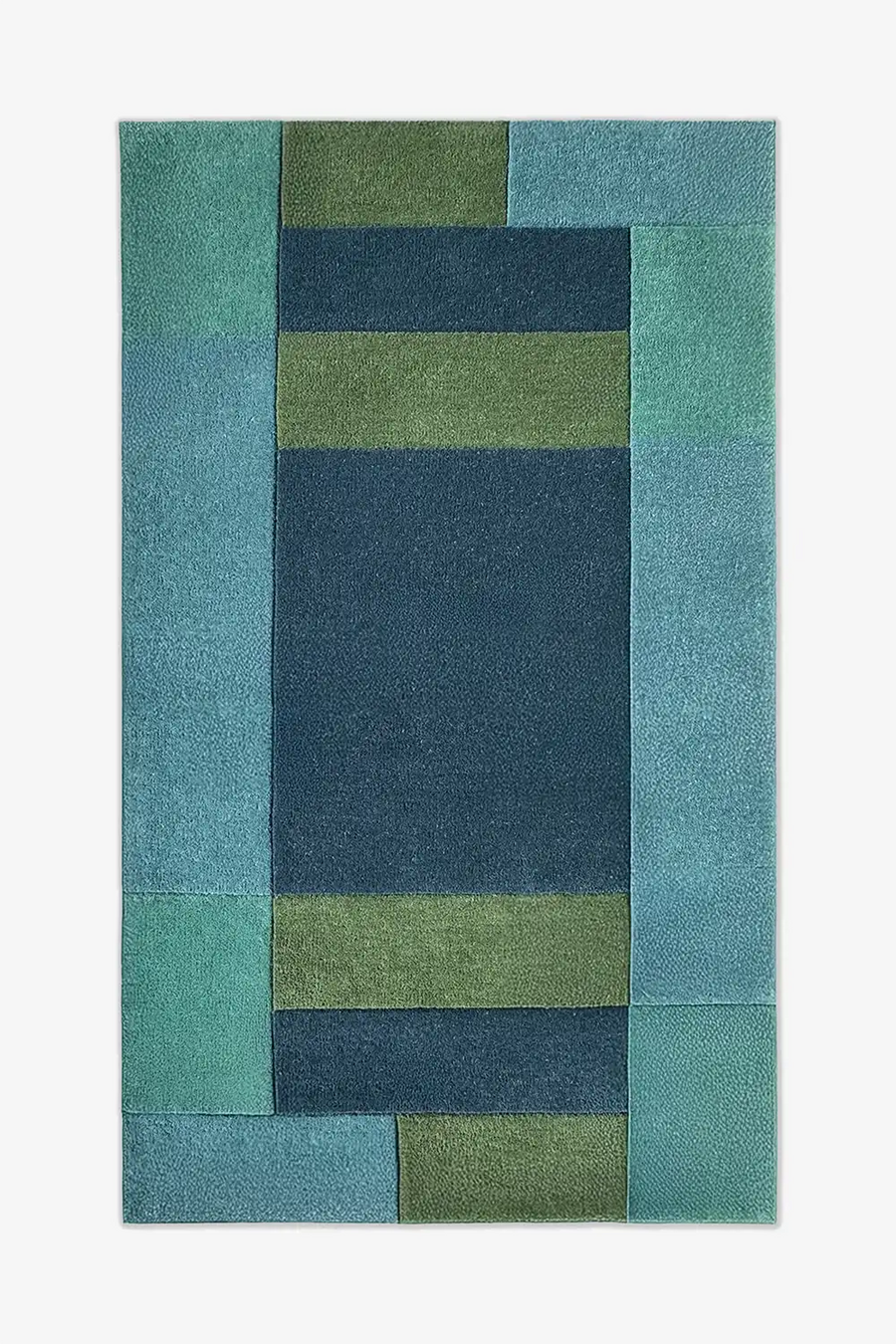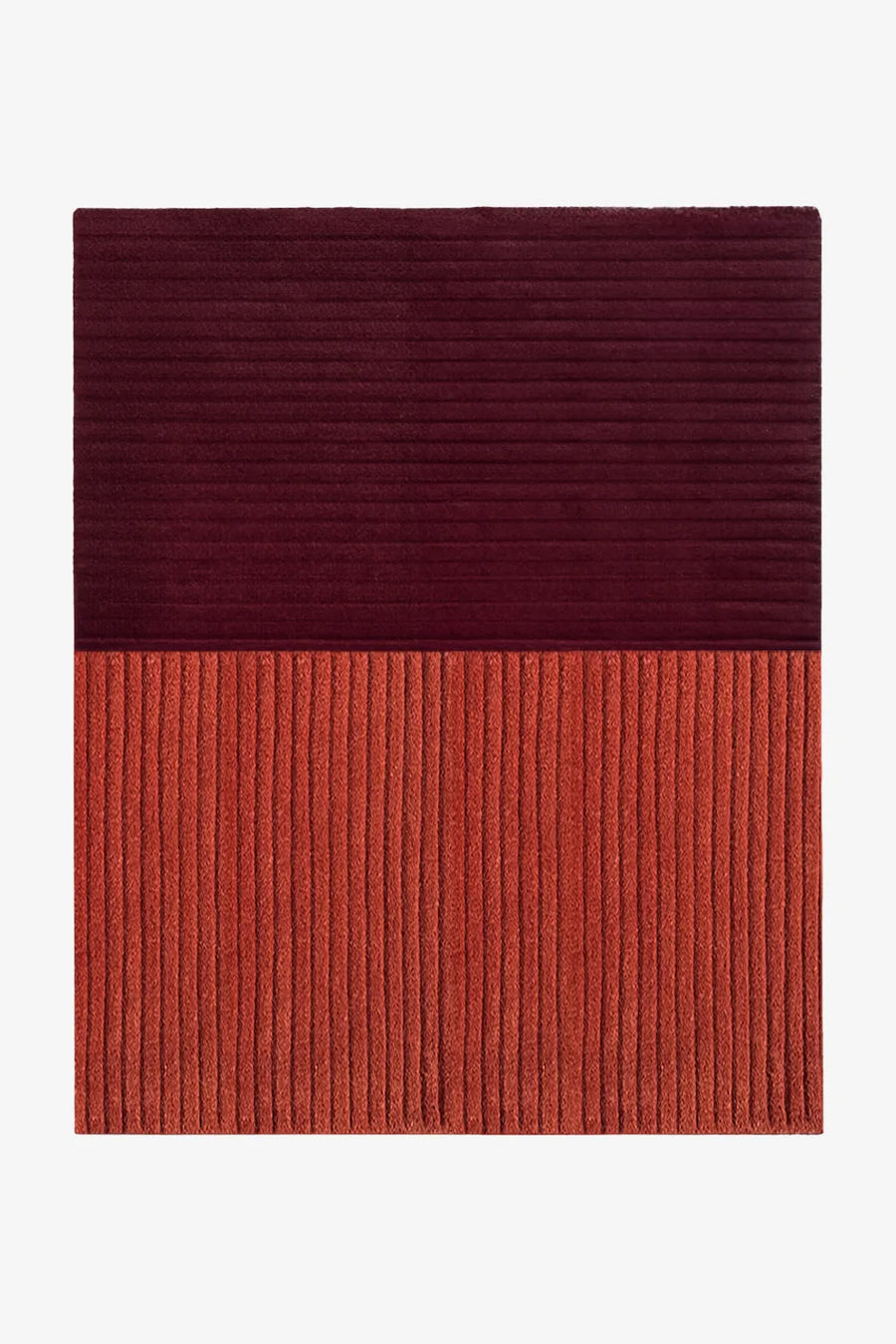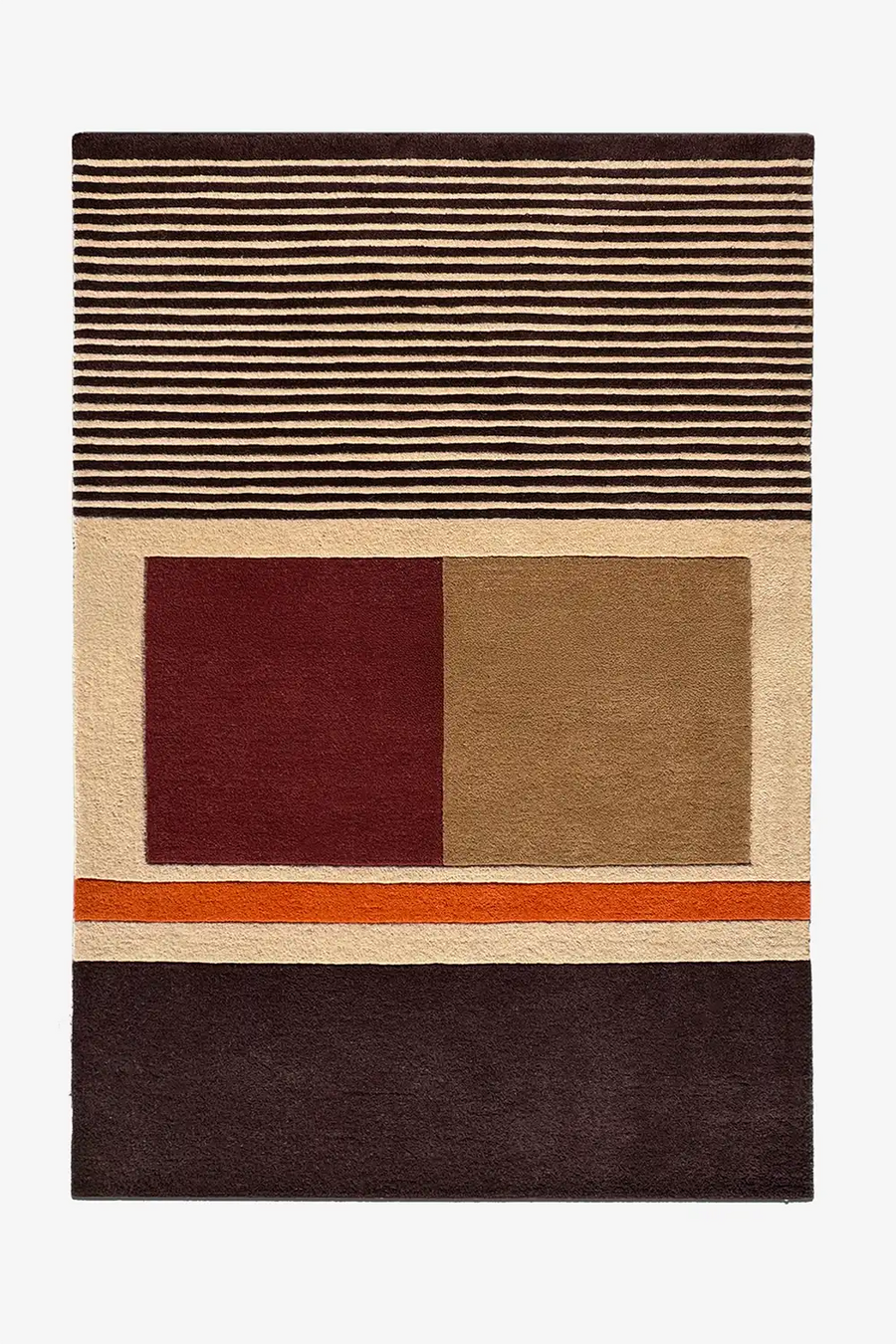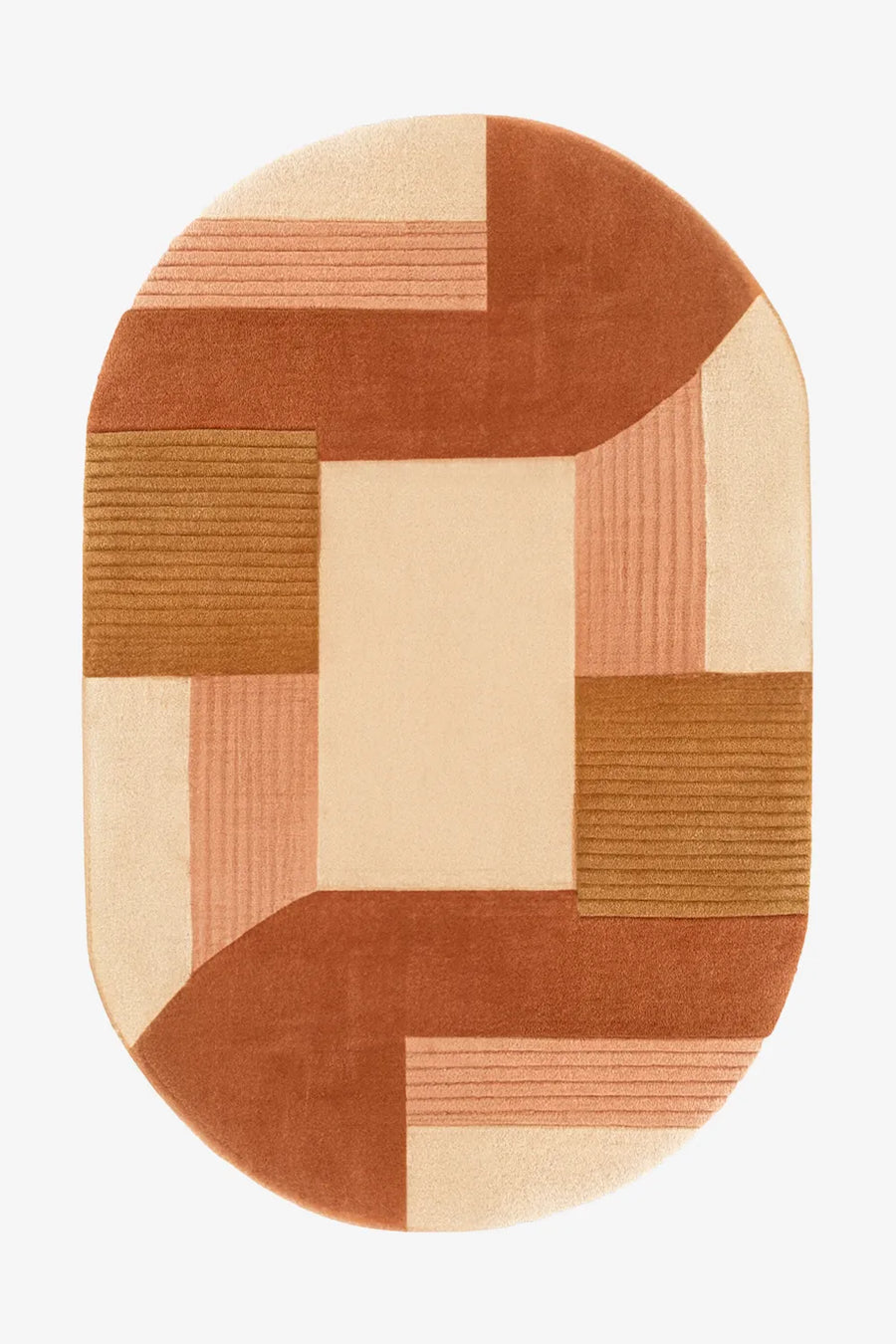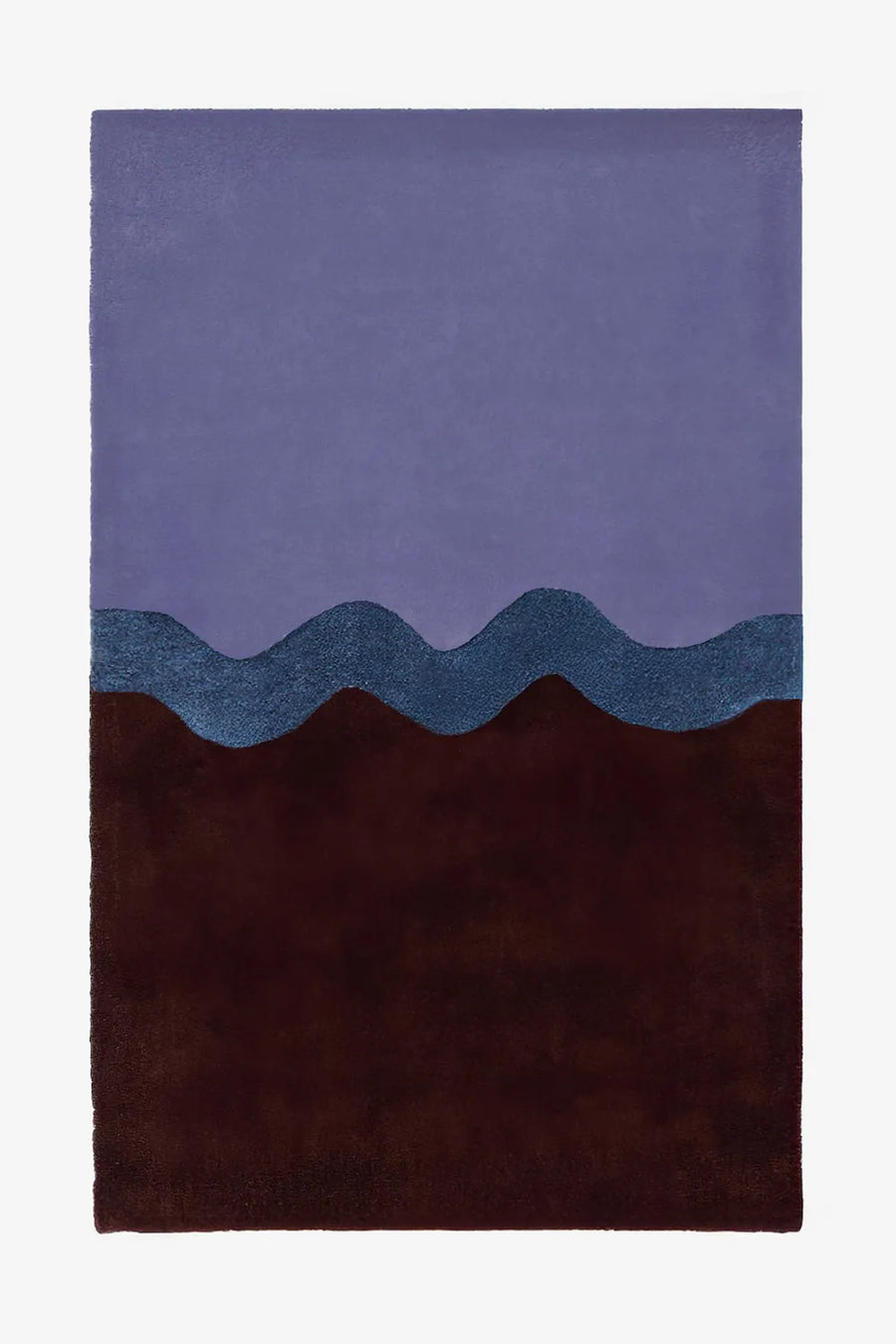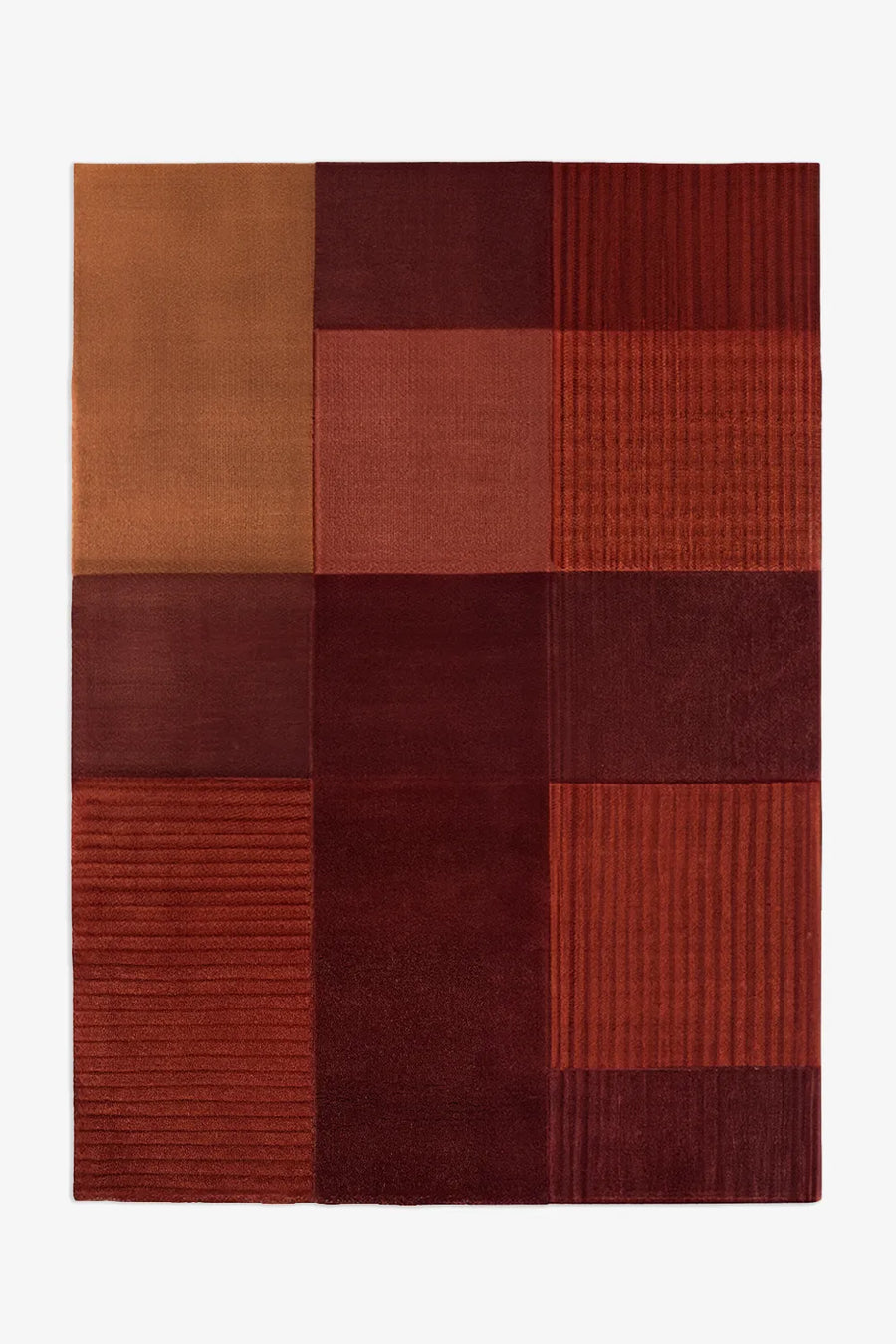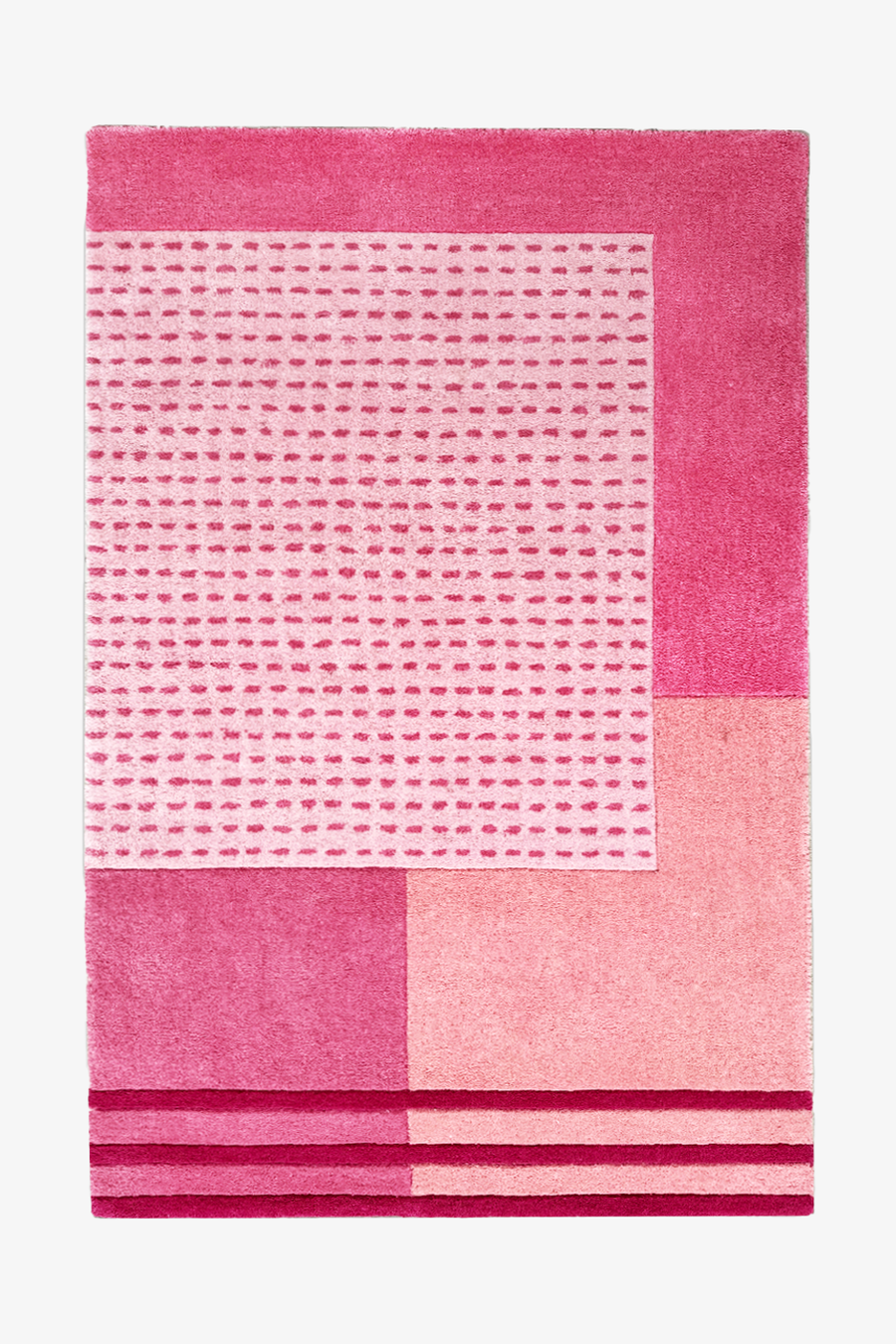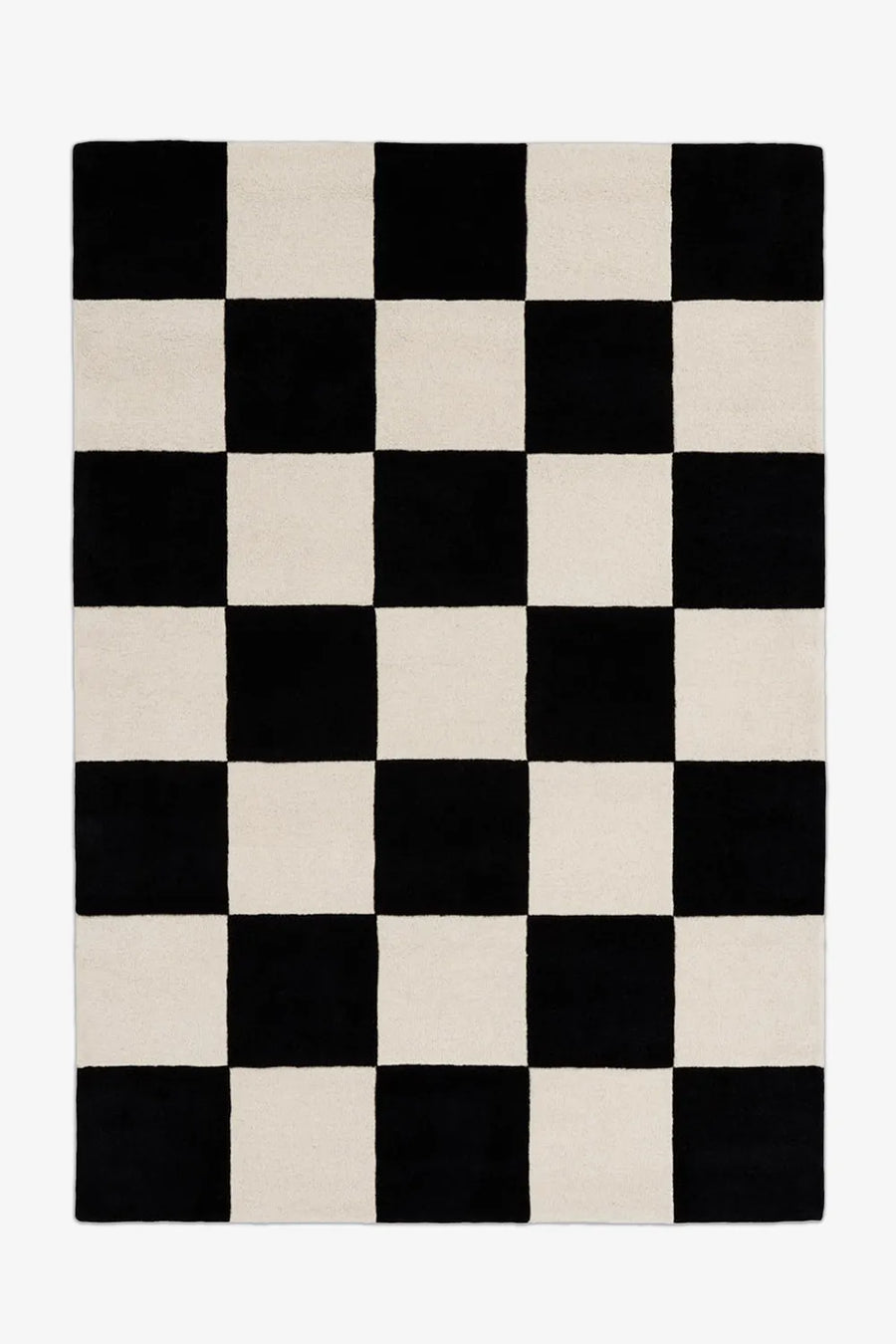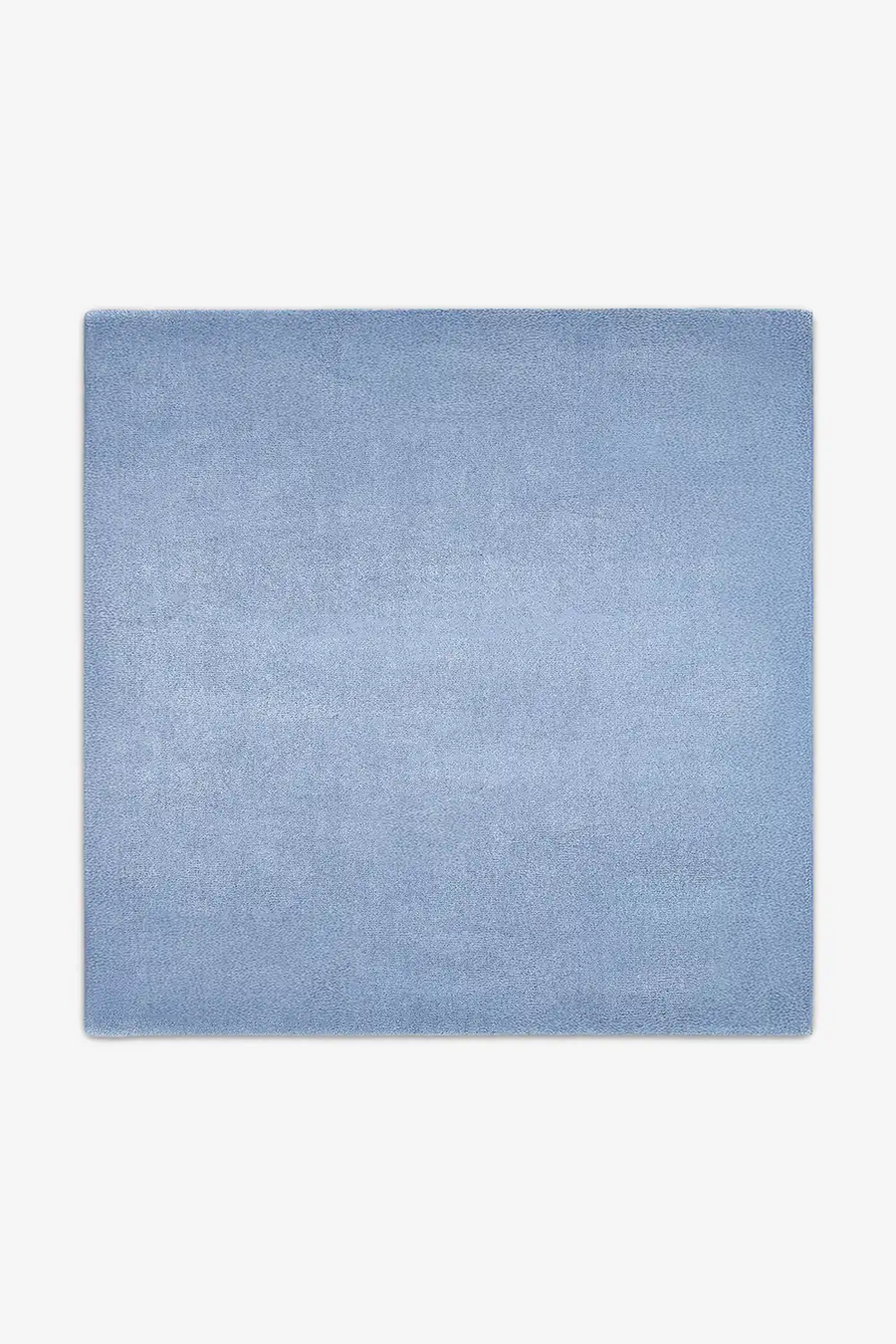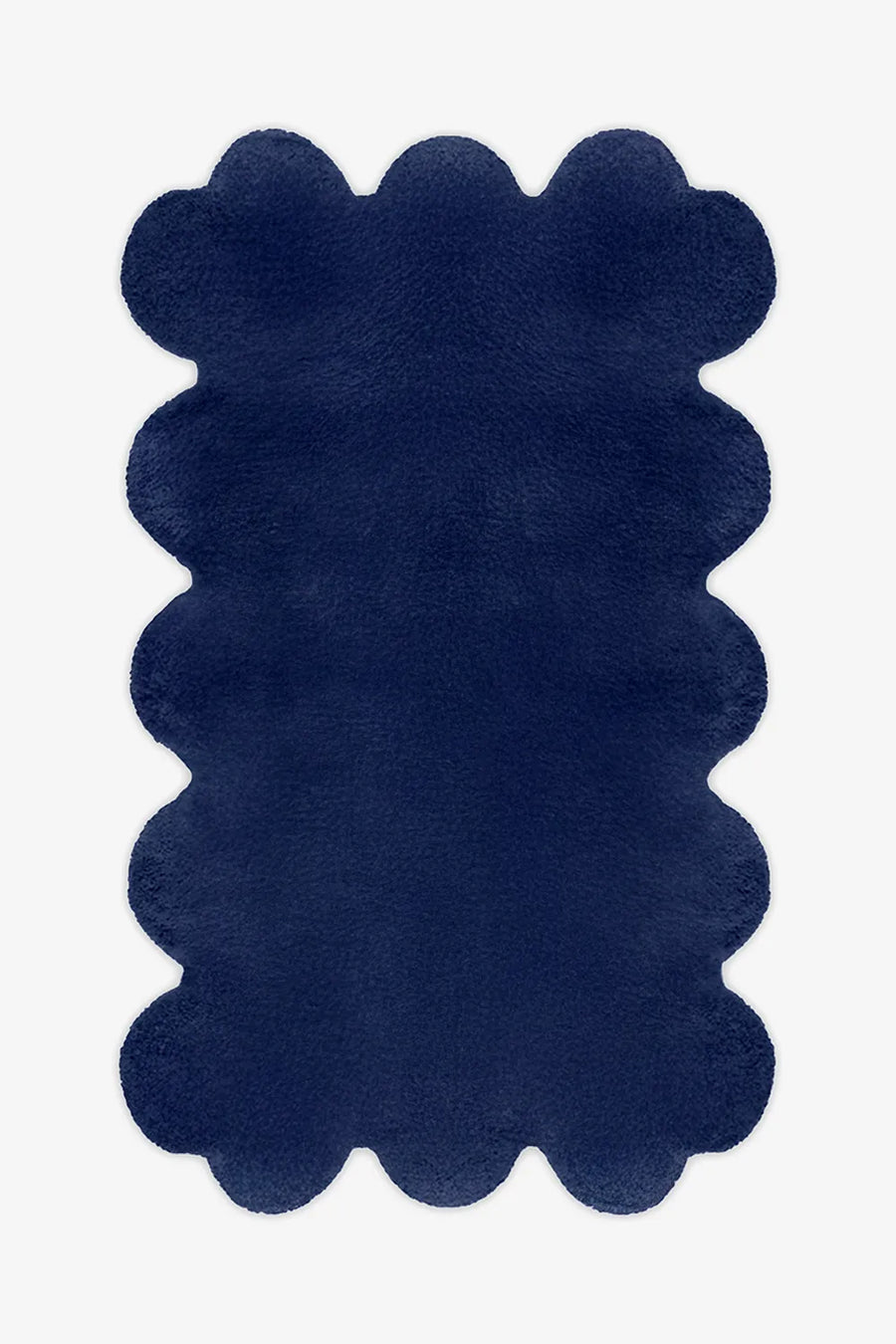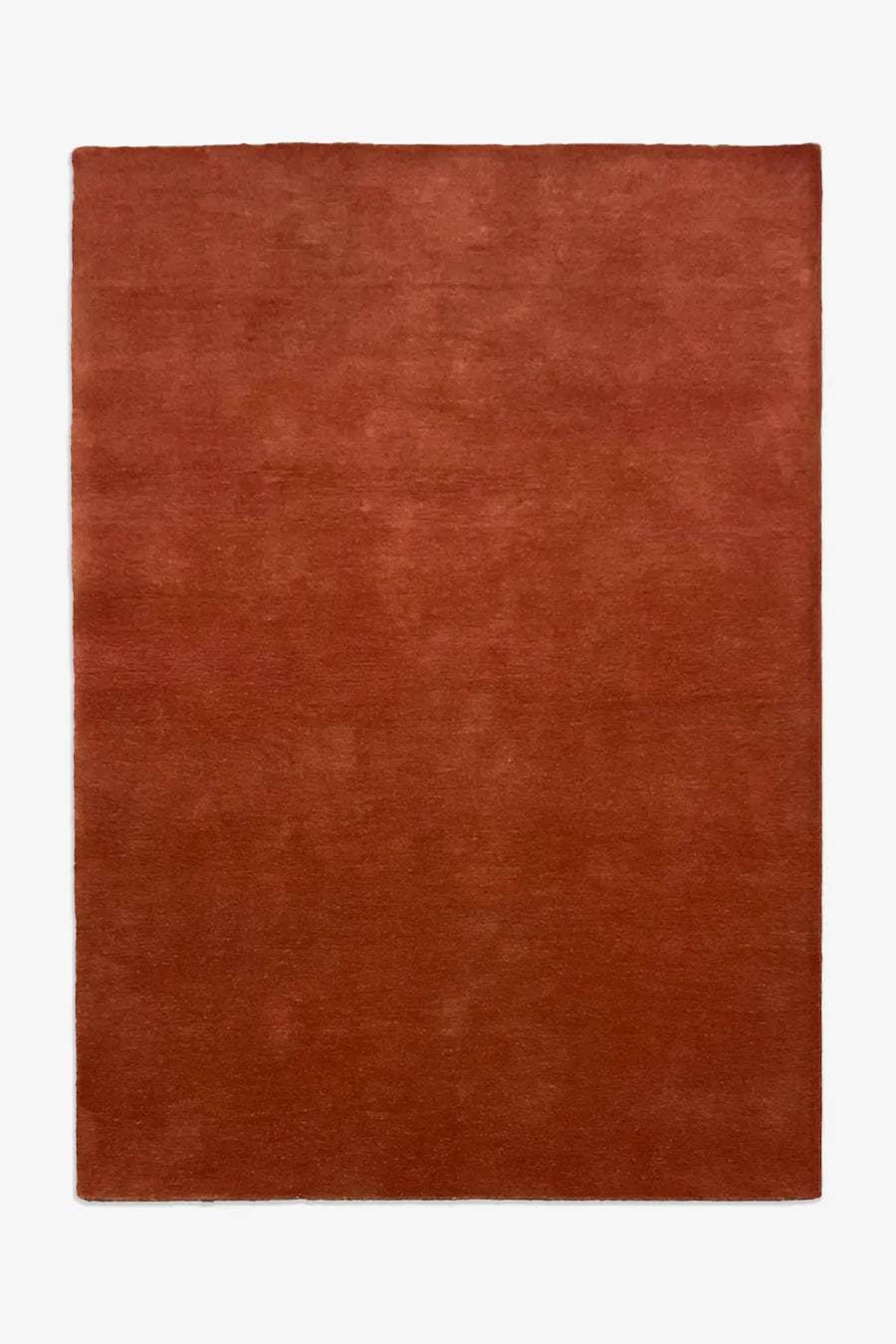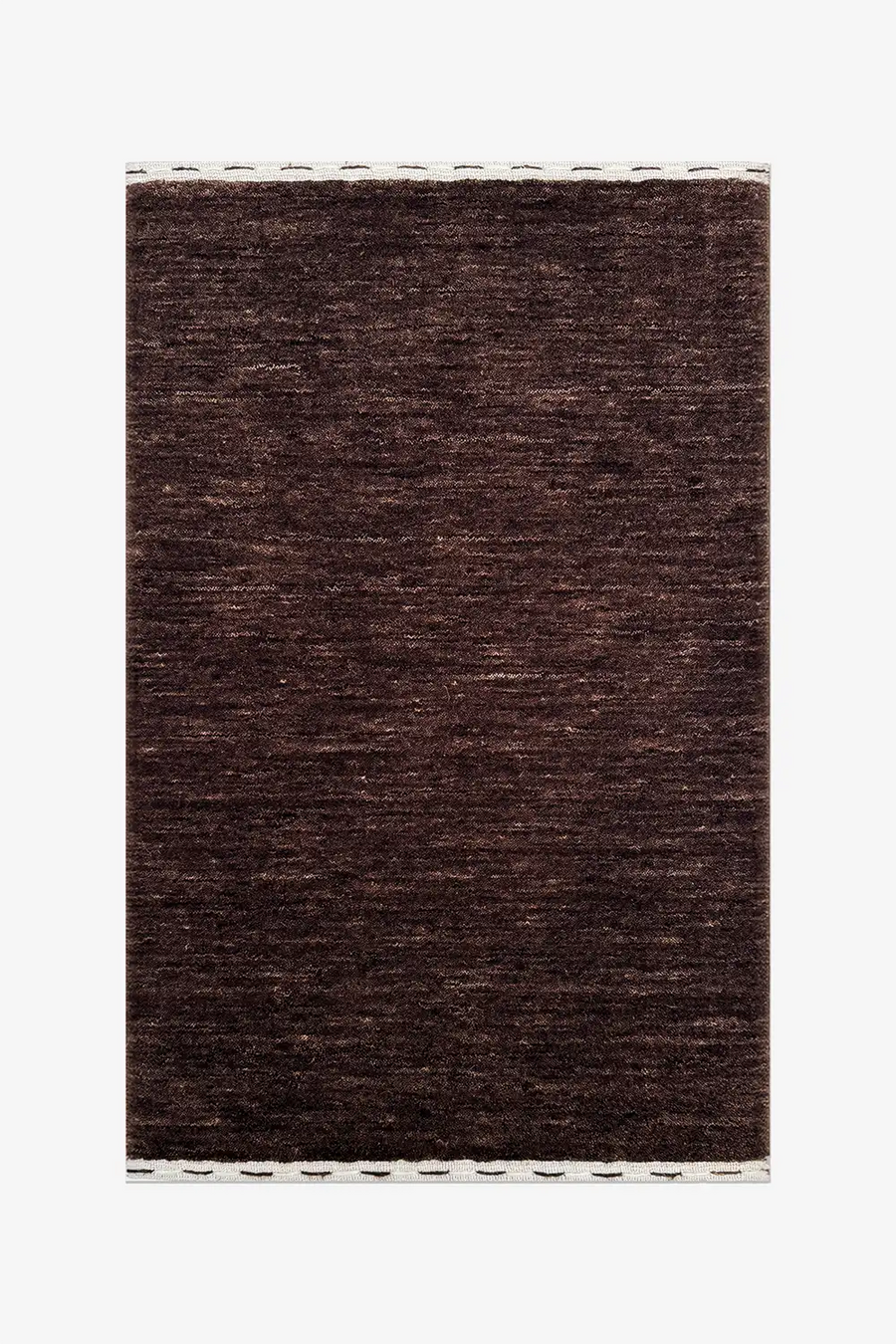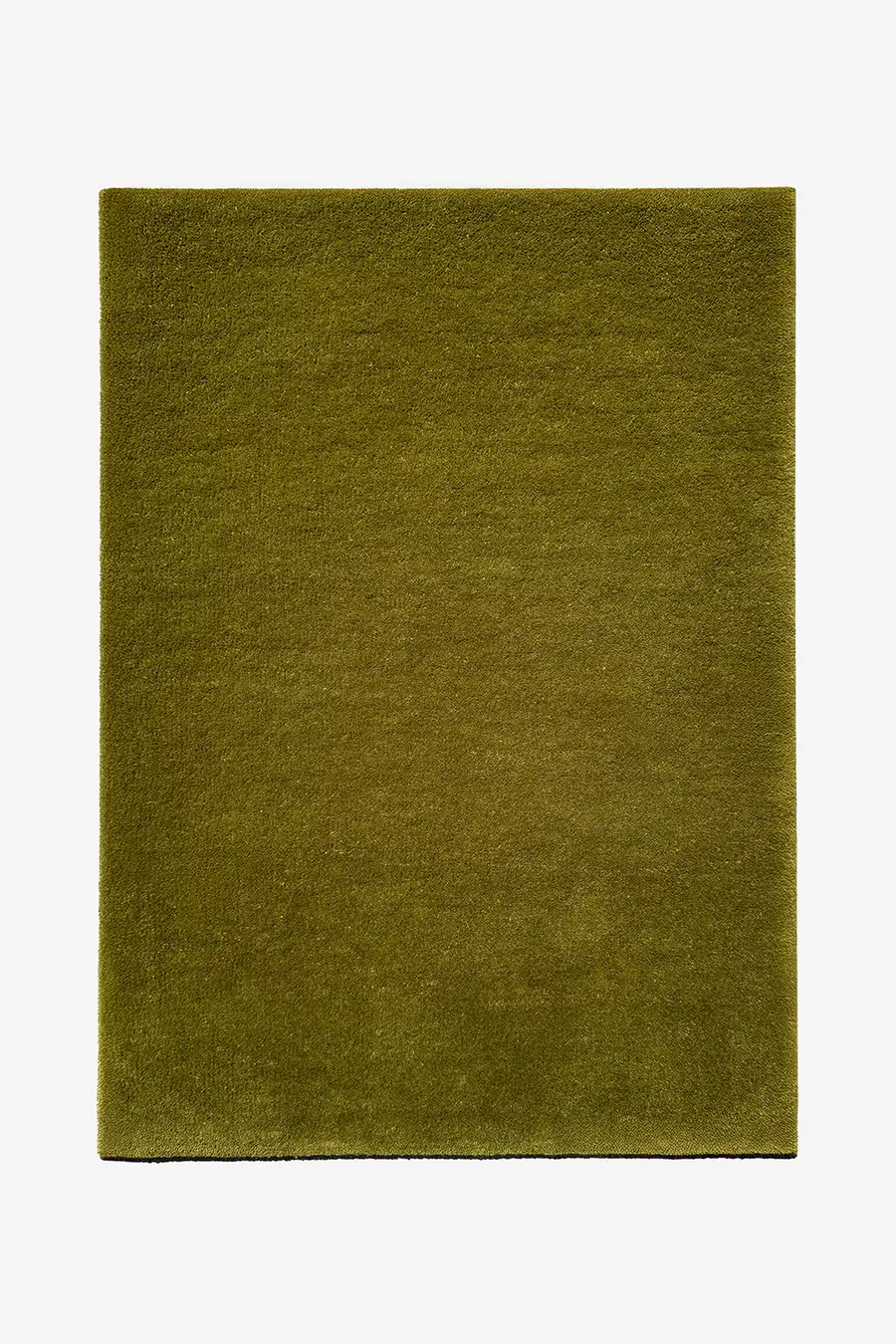Rugs by Pattern
Bold geometry, organic shapes, or timeless classics. Let pattern set the tone.
Choosing the Right Pattern
Pattern sets the mood. Bold geometrics energize a space, while softer abstract designs feel calming and organic. If your room already has strong visual elements, a solid or subtle pattern lets other pieces shine. But if walls and furniture are neutral, a statement rug with graphic pattern becomes the anchor. Trust your instincts and think about balance—pattern should complement your space, not compete with it.
Geometric Rugs
Structured patterns that add visual rhythm and modern energy
Abstract Rugs
Artistic, organic designs that feel expressive and one-of-a-kind
Striped Rugs
Clean lines that elongate space and bring timeless simplicity
Color Blocked Rugs
Bold, graphic fields of color for a confident, modern statement
Solid Color Rugs
Pattern-free design that lets texture and form take center stage
Can’t Find the Right Fit?
Every rug we make is fully customizable in size, shape, and color. Choose from over 1,200 wool shades—or design something entirely your own.
Frequently Asked Questions
Yes, but keep it intentional. If you're layering rugs, pair a bold pattern with something more subdued, or mix different scales (a large geometric with a small stripe). Vary the pattern types so they complement rather than compete. And make sure they share at least one or two colors to create visual cohesion.
Balance is key. If your space has a lot going on visually, opt for a simpler pattern like stripes, color blocked, or solid. But if your existing patterns are small-scale (like a subtle throw pillow print), a bold rug can still work. Just avoid matching pattern styles—mixing a floral pillow with a floral rug often feels too matchy.
Not necessarily. Large-scale patterns can actually make a room feel more expansive because they create fewer visual breaks. Small, busy patterns tend to feel more cluttered. The trick is proportion. A big, confident pattern in a small room can work beautifully if the rest of the space is relatively calm.
Geometric and abstract patterns are your friends here. They're visually busy enough to camouflage wear and minor stains better than solids or light-colored rugs. Stripes can show traffic patterns over time, so save those for lower-traffic spaces or opt for darker tones.
If you're drawn to it but nervous, that's usually a good sign. Bold doesn't mean wrong—it just means you need to commit. Start by looking at your space. If your walls, furniture, and decor are mostly neutral, a bold rug becomes an intentional focal point. If you're still unsure, live with the idea for a few days. Pull up the image on your phone in the actual room. You'll know pretty quickly if it feels right.
Generally, yes. Geometric and striped patterns feel crisp and work well in modern spaces, dining rooms, and offices. Abstract and organic patterns bring softness to bedrooms and living rooms. Solid rugs are versatile and great for spaces where you want other elements to stand out. But these are guidelines, not rules. If you love a pattern and it fits your space functionally, go for it.
How to Choose the Right Rug Pattern for Your Home
Understanding Pattern Scale and Density
The scale of a pattern matters as much as the pattern itself. Large-scale geometric designs make bold statements and work best in spacious rooms where they have room to breathe. Small, intricate patterns tend to feel busier and can make a room appear more lived-in, which works beautifully in cozy, casual spaces. If you're working with a small room, avoid overly busy patterns that can overwhelm the space. Instead, opt for simpler designs or explore our collection of solid rugs that add texture without visual clutter.
Matching Patterns to Your Interior Style
Your rug pattern should complement your overall design aesthetic. Geometric patterns pair naturally with mid-century modern, Japandi, and minimalist interiors, while abstract and organic designs bring softness to bohemian and maximalist spaces. If you're drawn to clean, architectural interiors, striped rugs offer structure without feeling overly decorative. Unsure of your style? Browse rugs by interior style to see pattern in context.
Color and Pattern Working Together
Pattern doesn't exist in a vacuum. The colors within your chosen pattern need to work with your existing palette. A bold multicolor geometric rug can anchor a neutral room, while a tonal abstract design in soft blues or greens adds subtle interest without competing for attention. If you know your color preference, start with our shop by color collections and filter by pattern from there. This approach helps you find rugs that check both boxes.
Considering Room Function and Traffic
High-traffic areas like entryways, hallways, and dining rooms benefit from patterns that camouflage wear and minor stains. Geometric and abstract patterns with varied tones are ideal here. Bedrooms and living rooms, which see less foot traffic, can handle lighter solid or color-blocked designs. And if you're choosing a rug for a specific room, our shop by room guide breaks down which patterns perform best in each space.
Balancing Pattern with Other Design Elements
If your walls feature bold wallpaper, your furniture is patterned, or you have a gallery wall with visual complexity, your rug should provide balance rather than add more chaos. In these cases, solid rugs or subtle color-blocked designs work best. Conversely, if your space feels flat or sterile, a rug with graphic pattern can inject life and personality. Think of your rug as the final layer that either harmonizes or intentionally contrasts with everything else in the room.
Size and Shape Influence Pattern Perception
A small rug with a busy pattern can feel cluttered, while a large rug with the same pattern spreads out and feels more balanced. Similarly, the shape of your rug affects how pattern reads in a space. Round rugs with radiating patterns draw the eye inward, while rectangular rugs with linear designs guide movement through a room. And if you're still determining the right dimensions, check out our shop by size guide to ensure your pattern choice suits your room proportions.
Craftsmanship and Pattern Longevity
Not all patterns age the same way. Hand-tufted and hand-knotted rugs maintain their pattern integrity over time, while lower-quality construction can lead to flattening and fading. At Jubi, all of our rugs are crafted using traditional techniques that ensure your pattern stays sharp and vibrant for years. Investing in quality construction means your rug's design will look as intentional a decade from now as it does today.
Final Thoughts
Choosing a rug pattern isn't just about aesthetics. It's about understanding how pattern interacts with color, scale, style, and function. The right pattern elevates your entire room. The wrong one can make a space feel disjointed or chaotic. Take your time, consider how the rug will be used, and trust your instincts.






